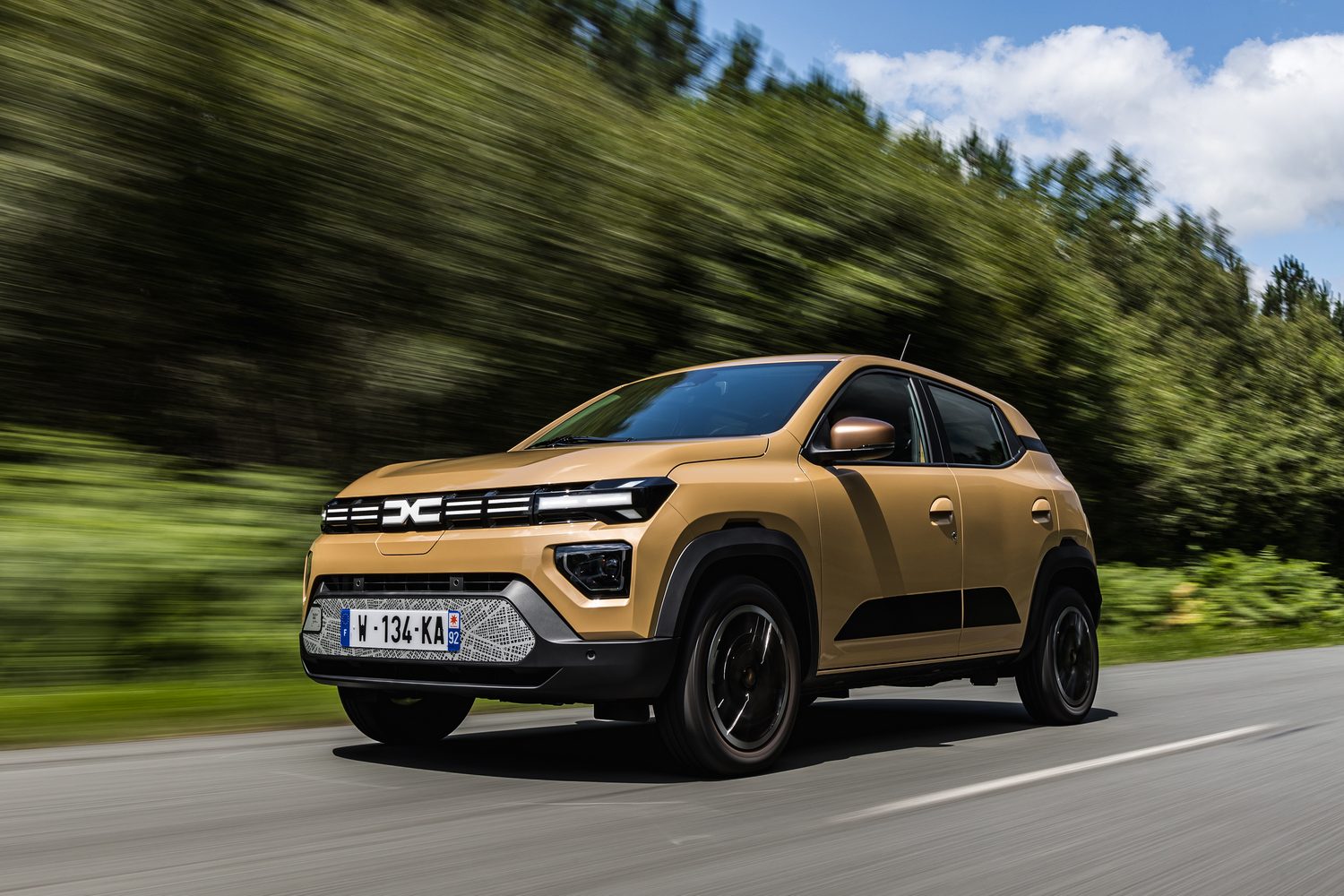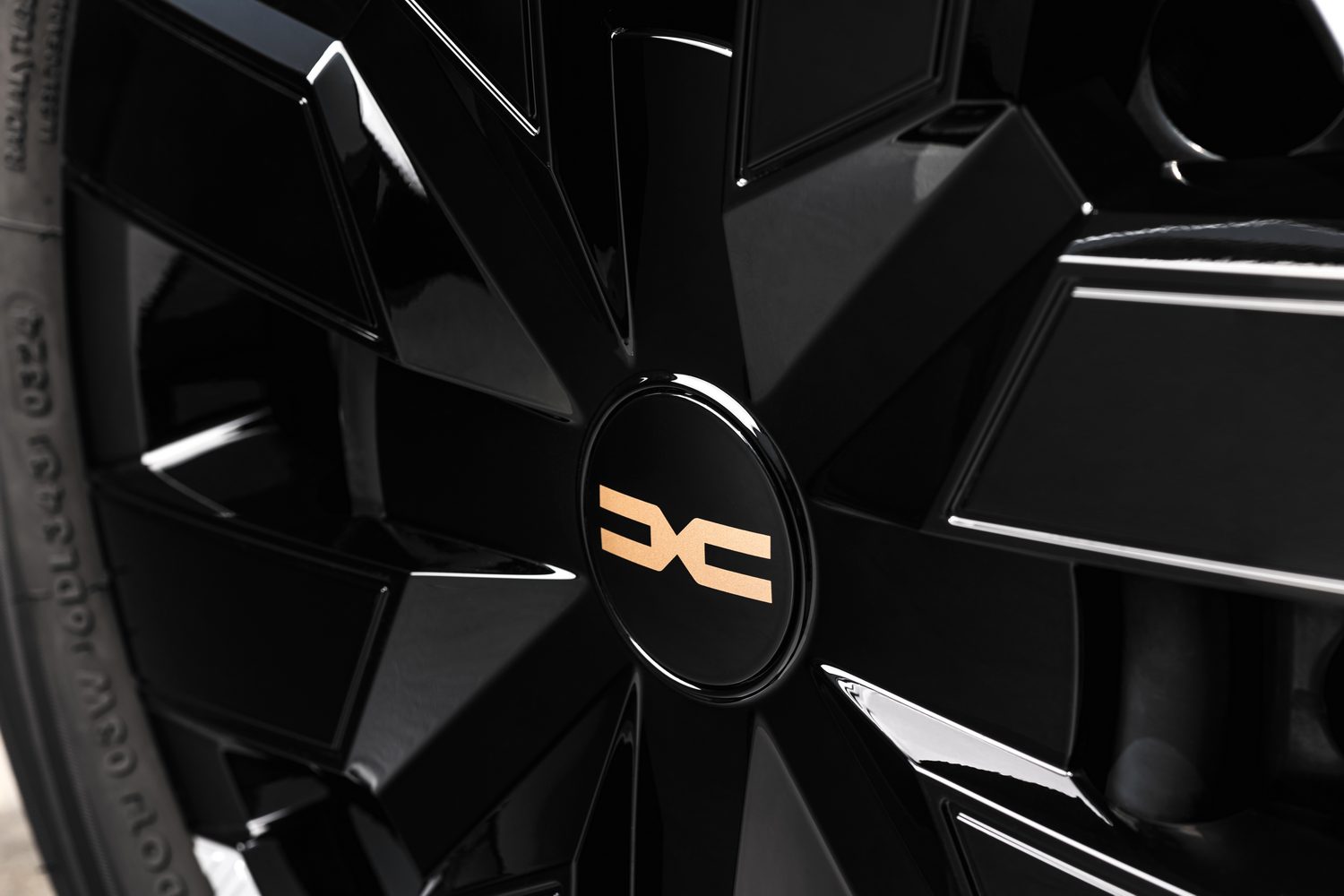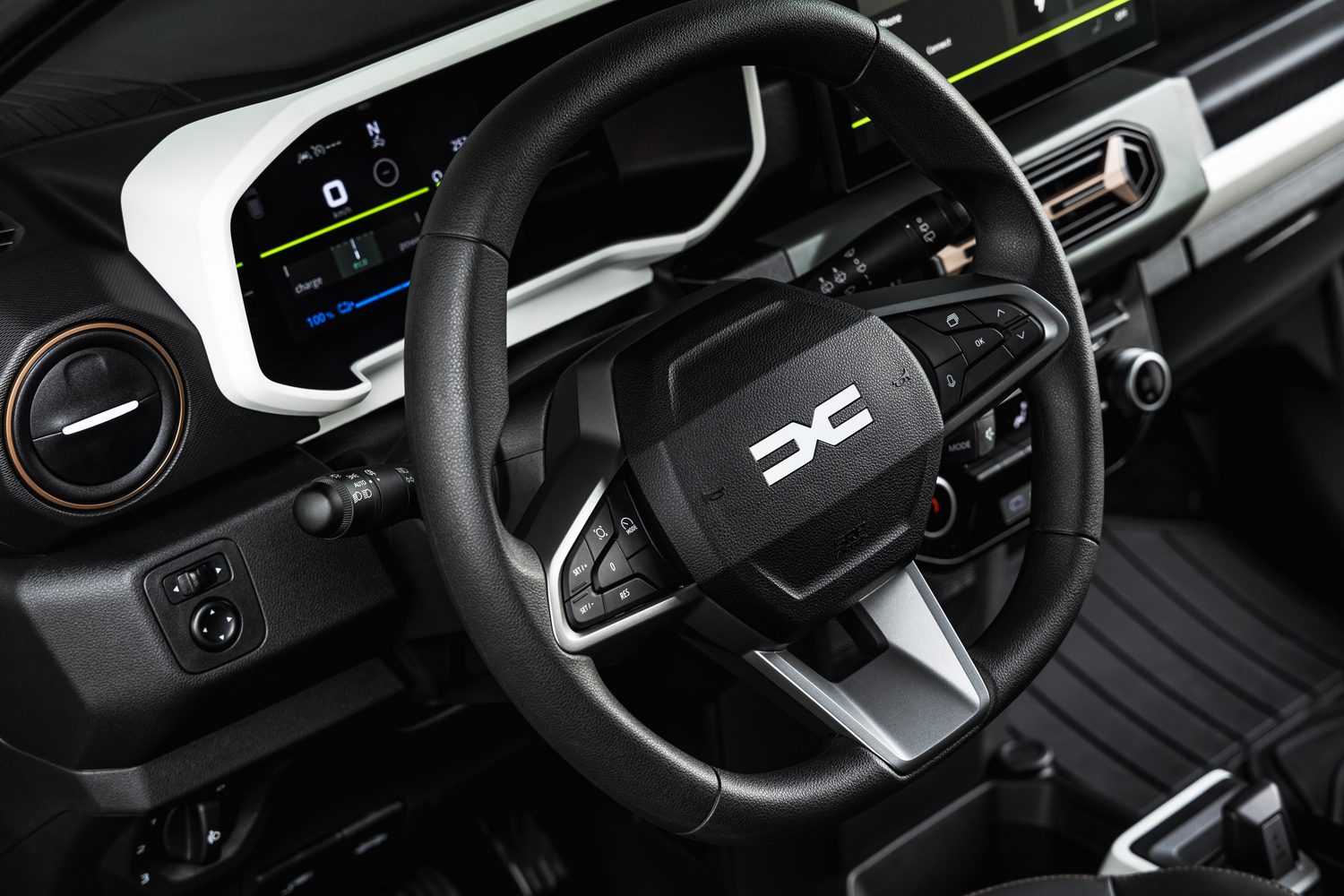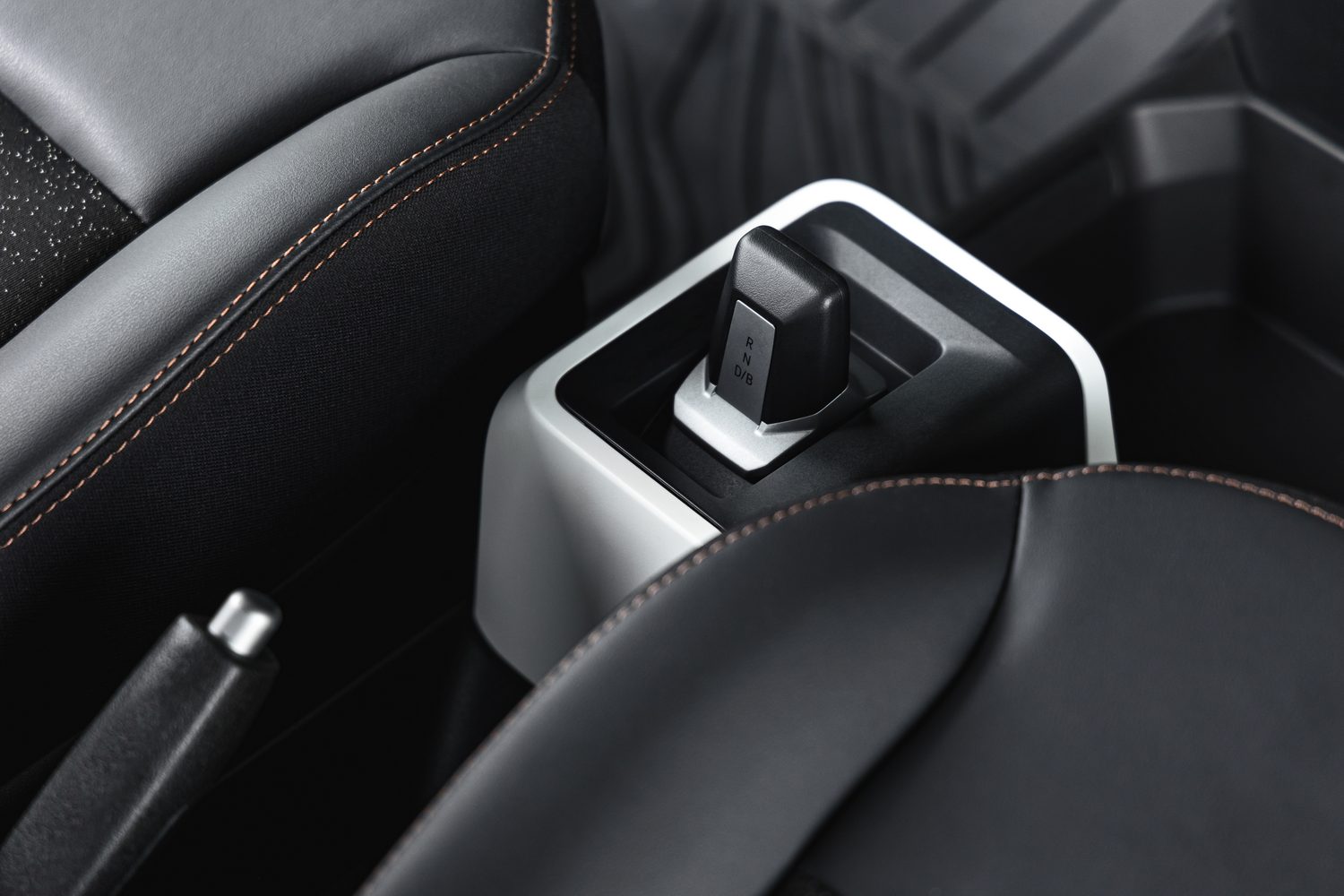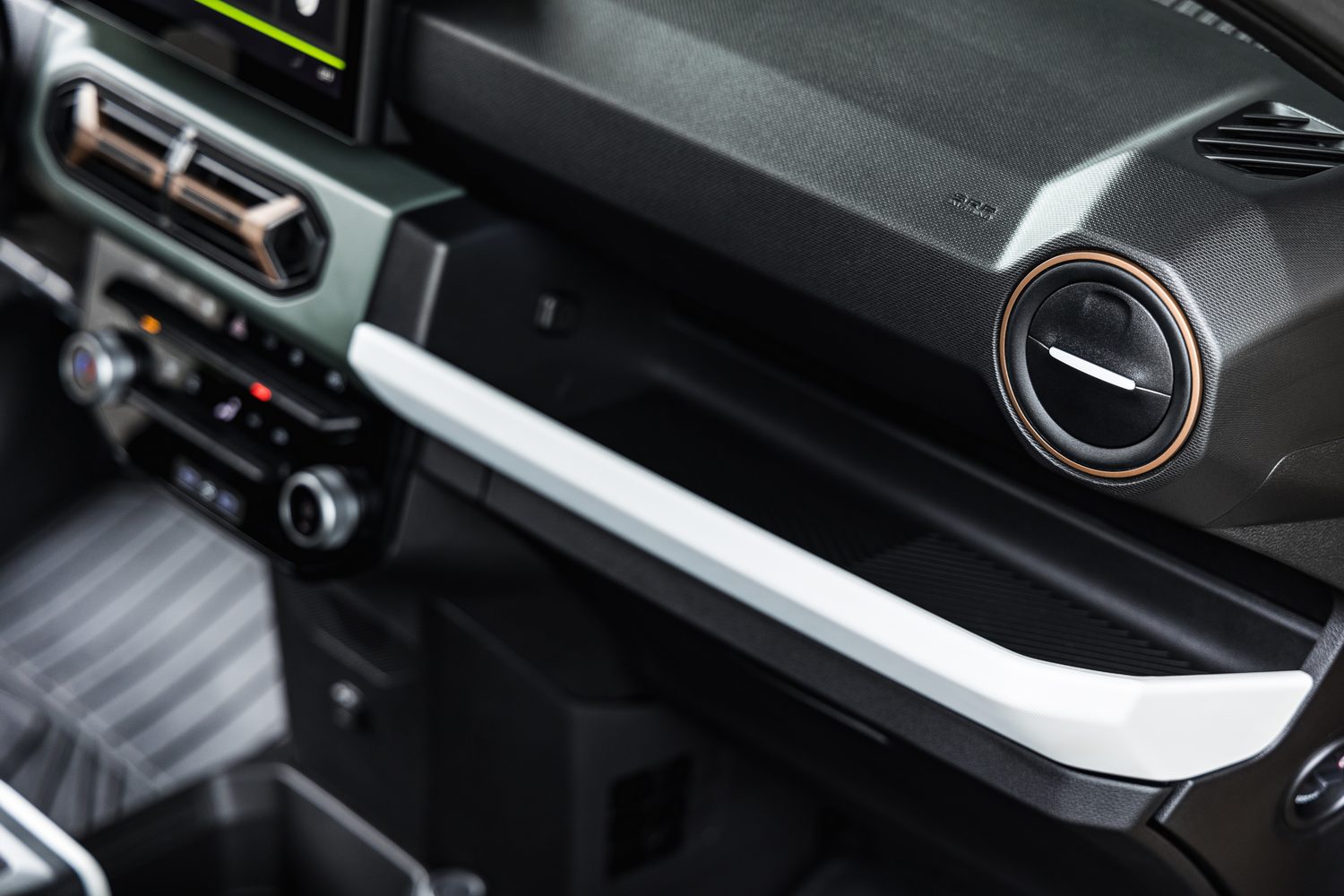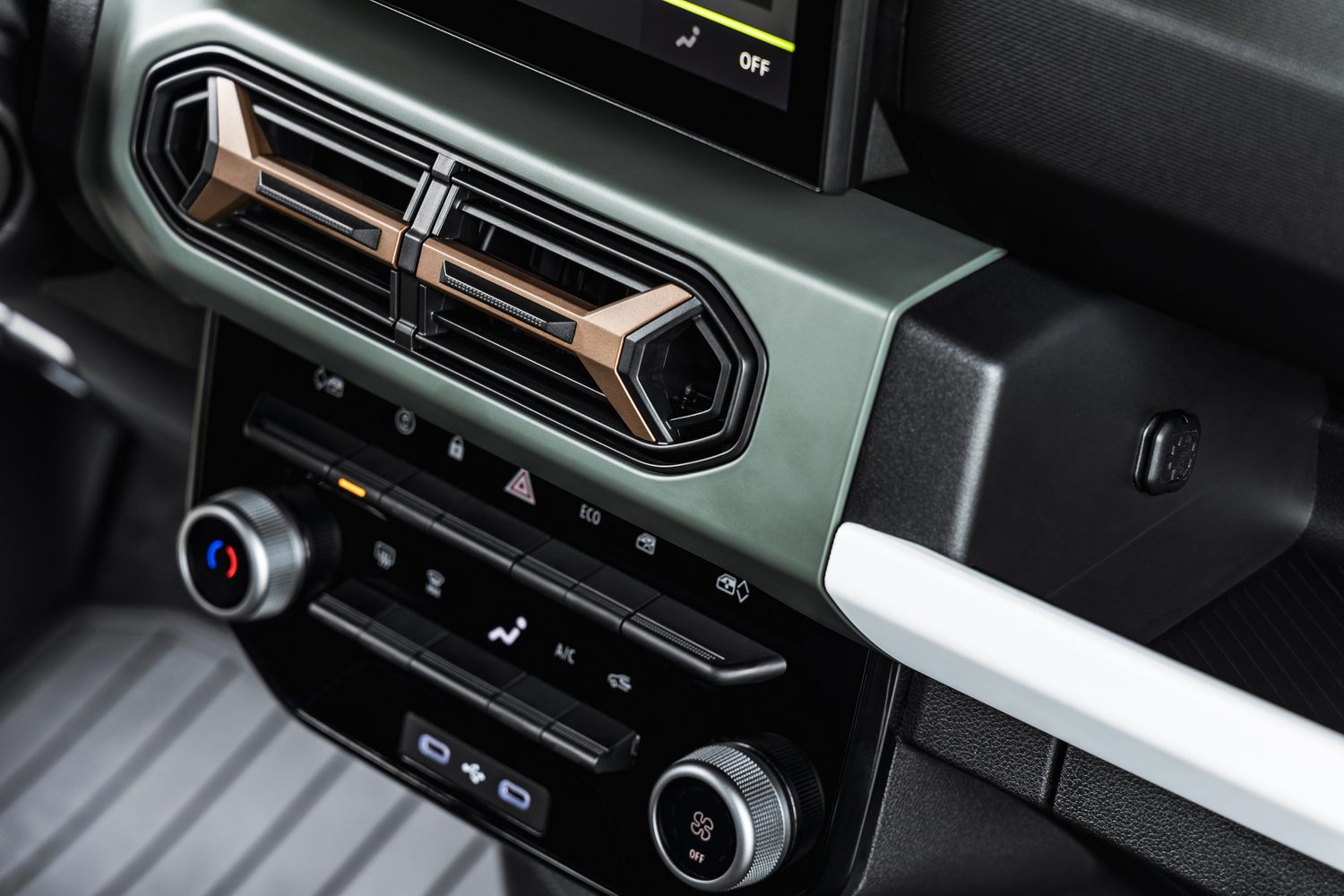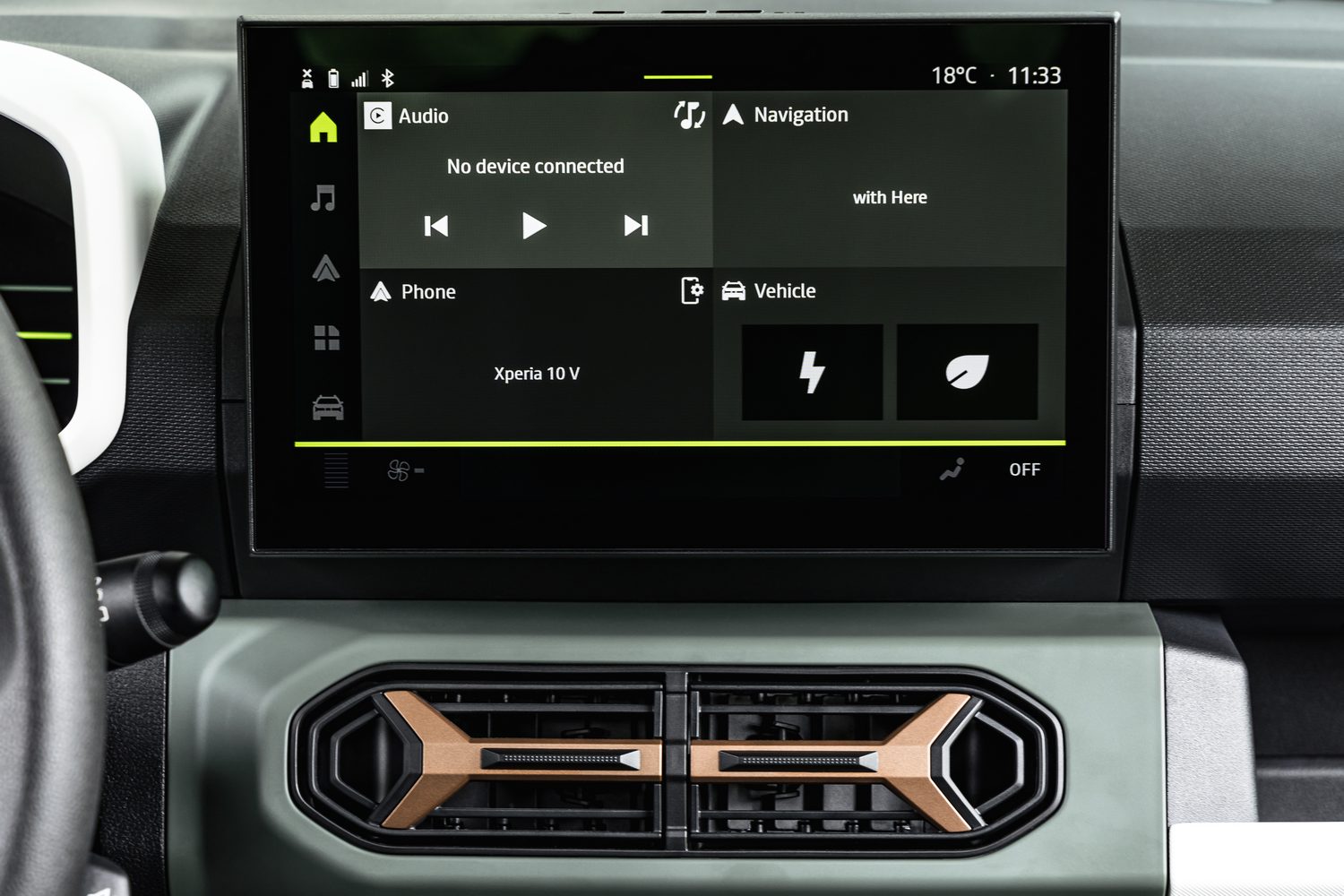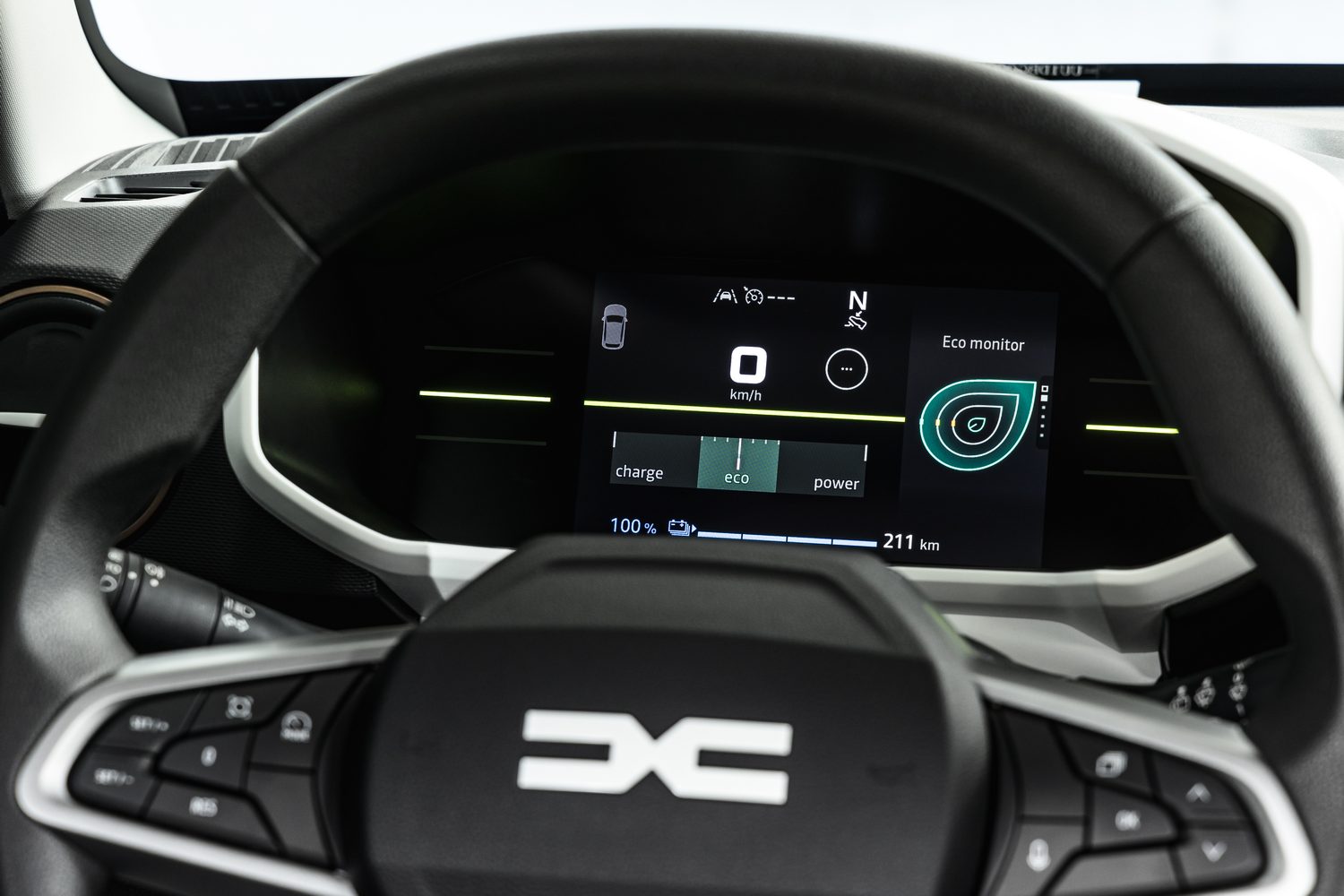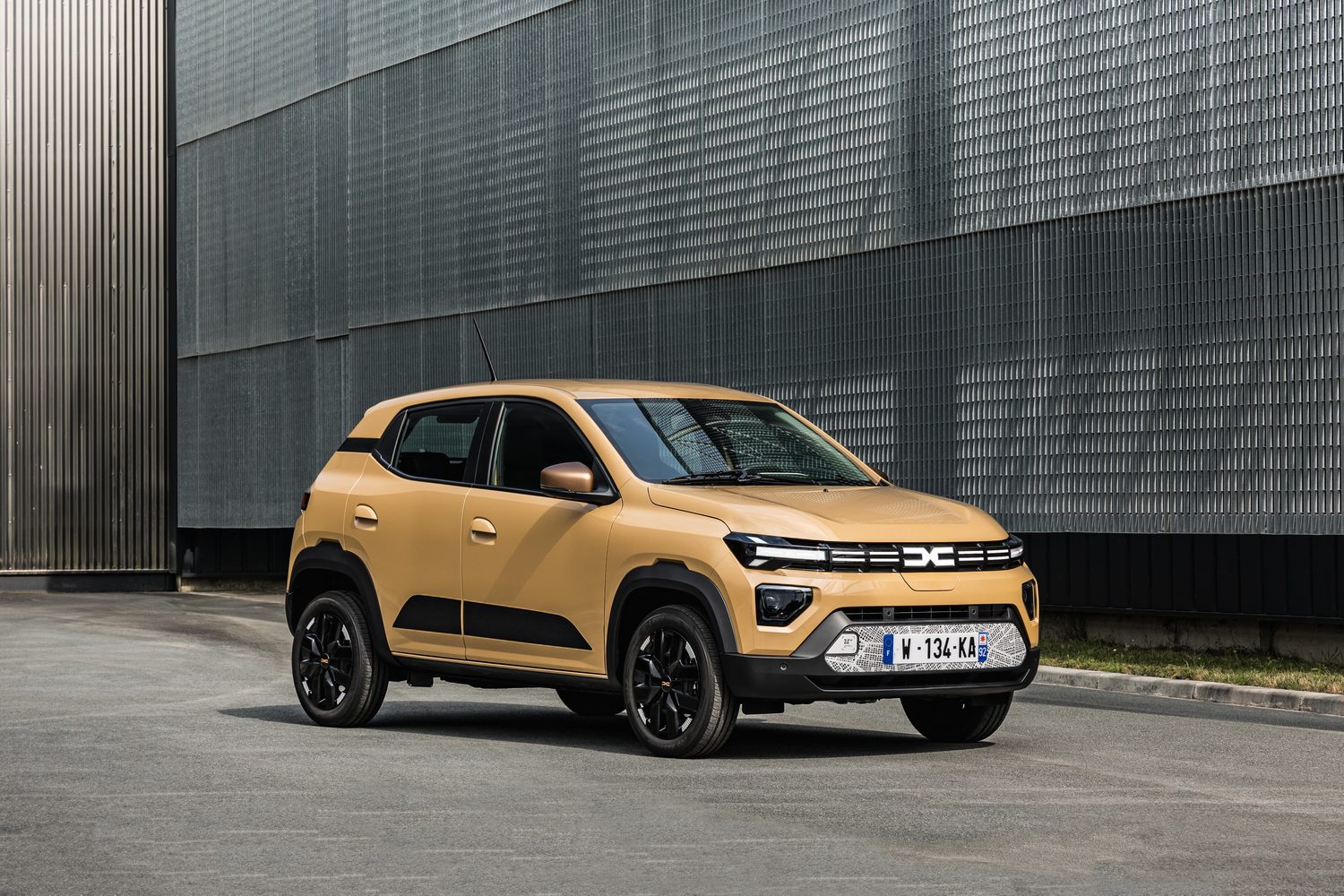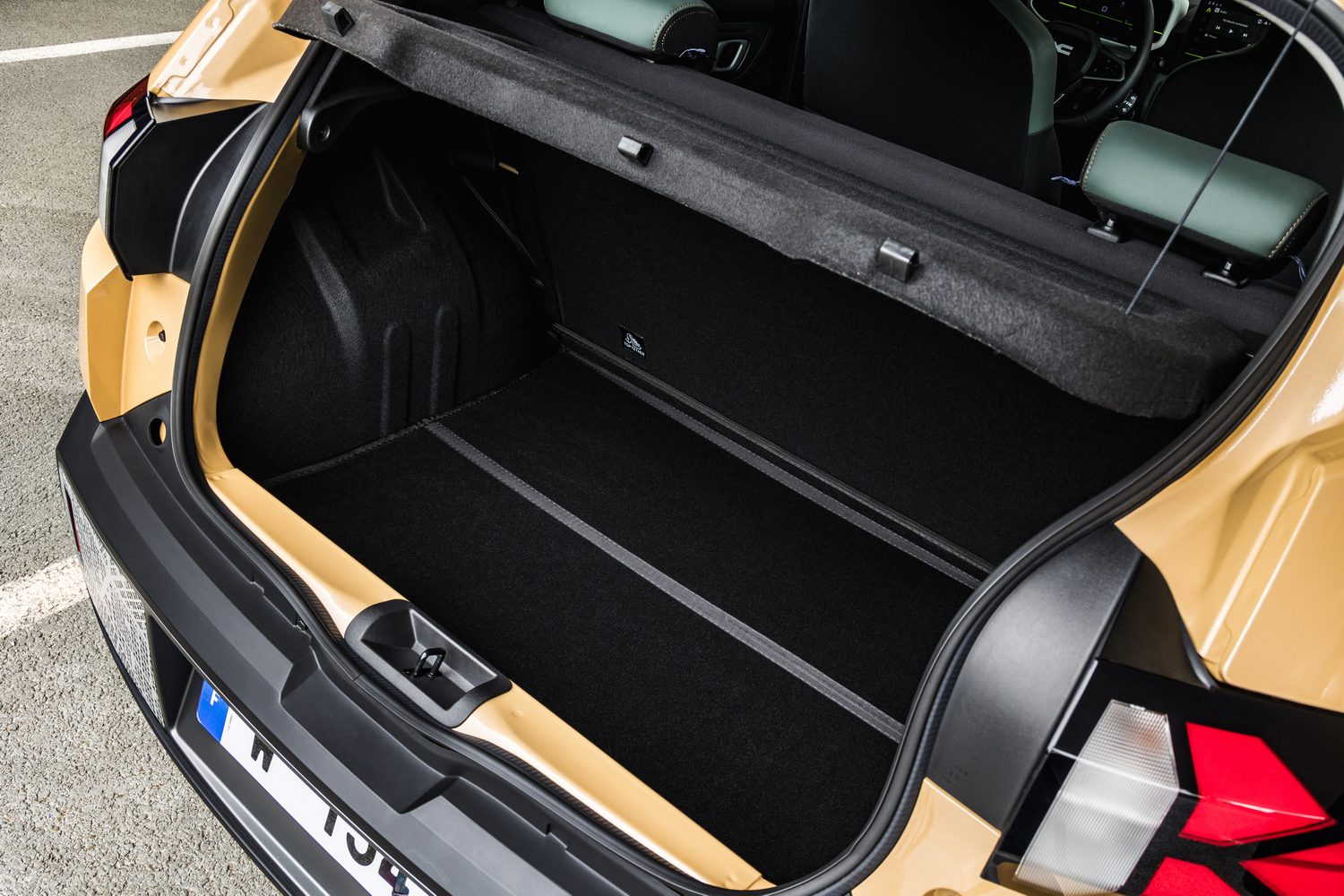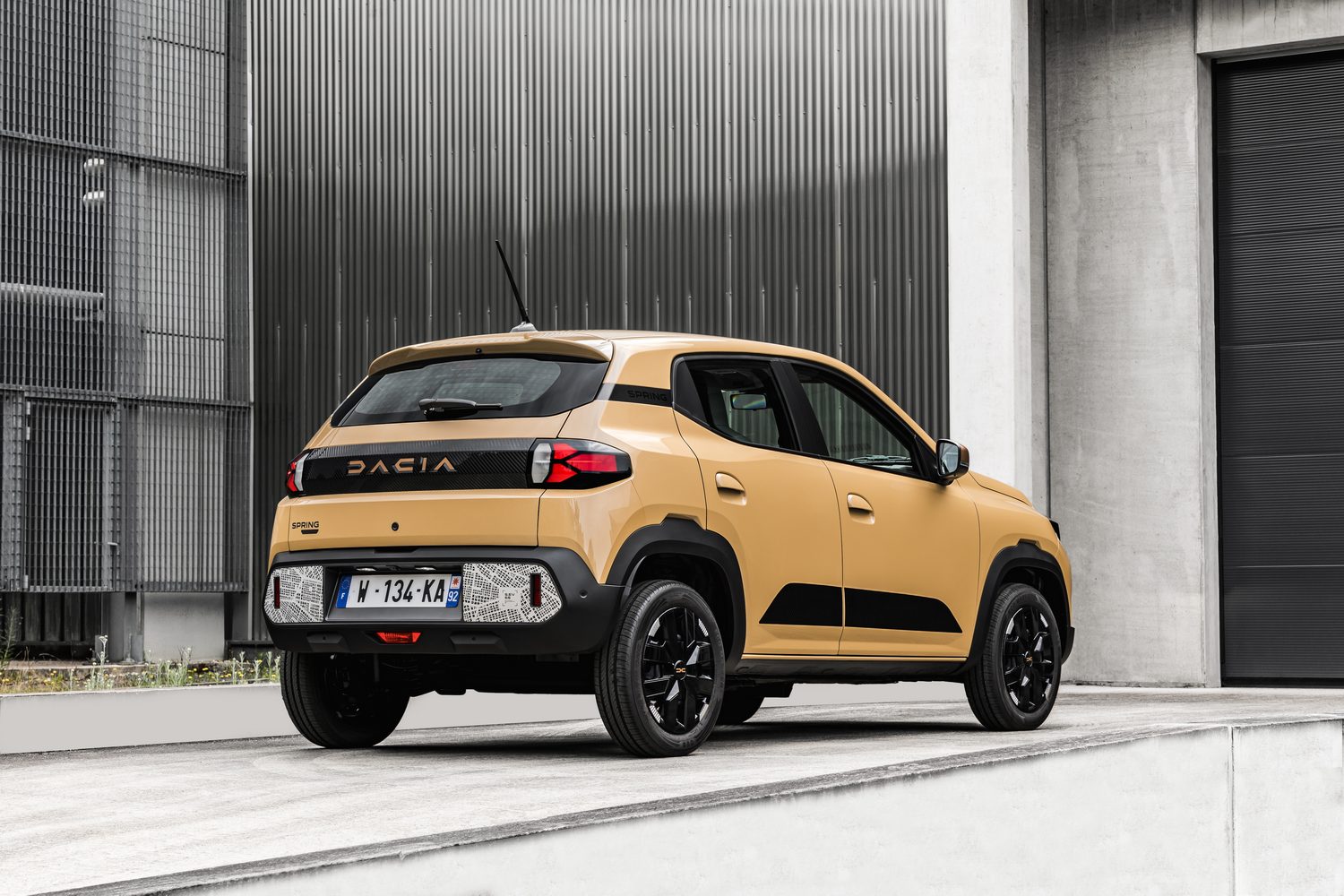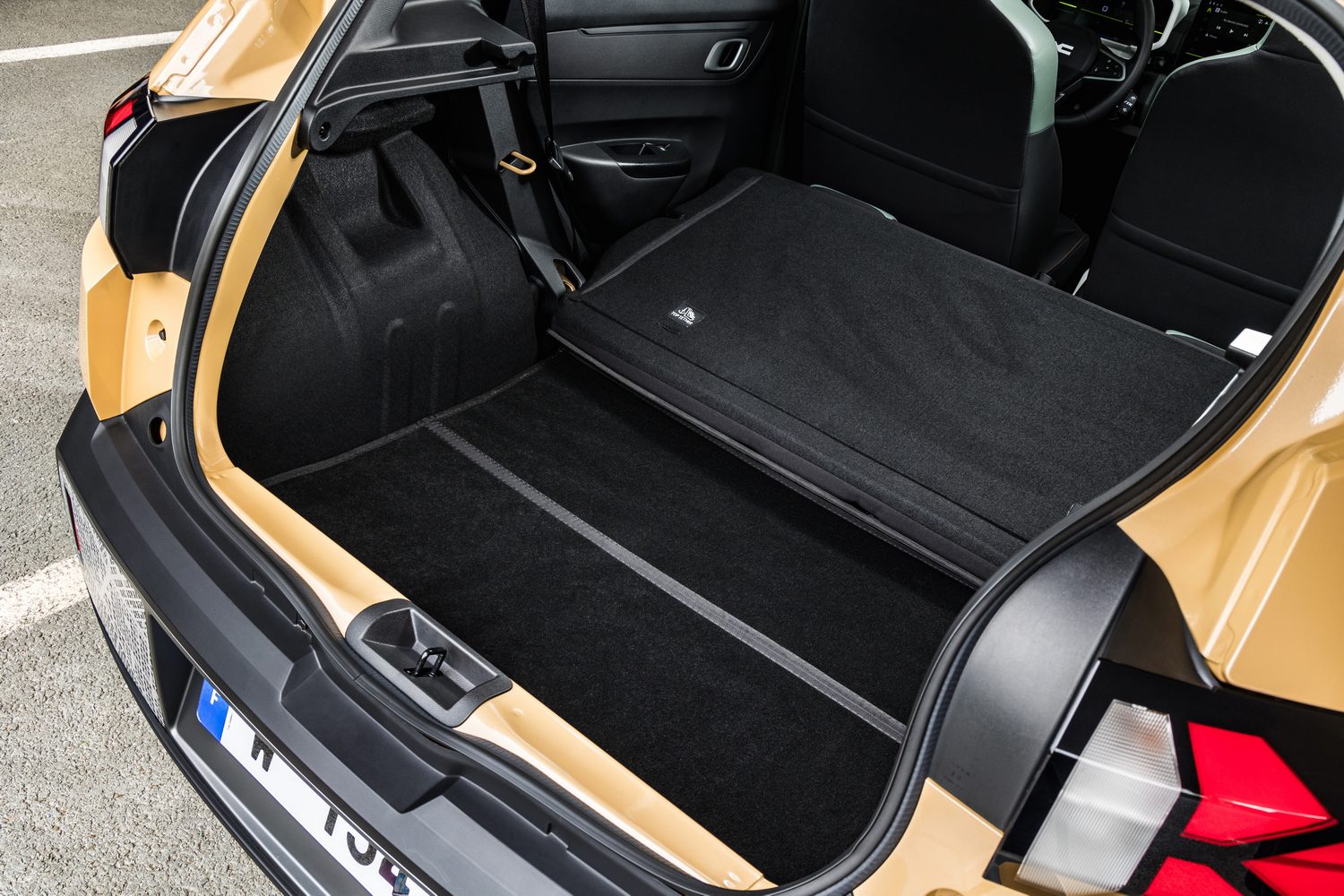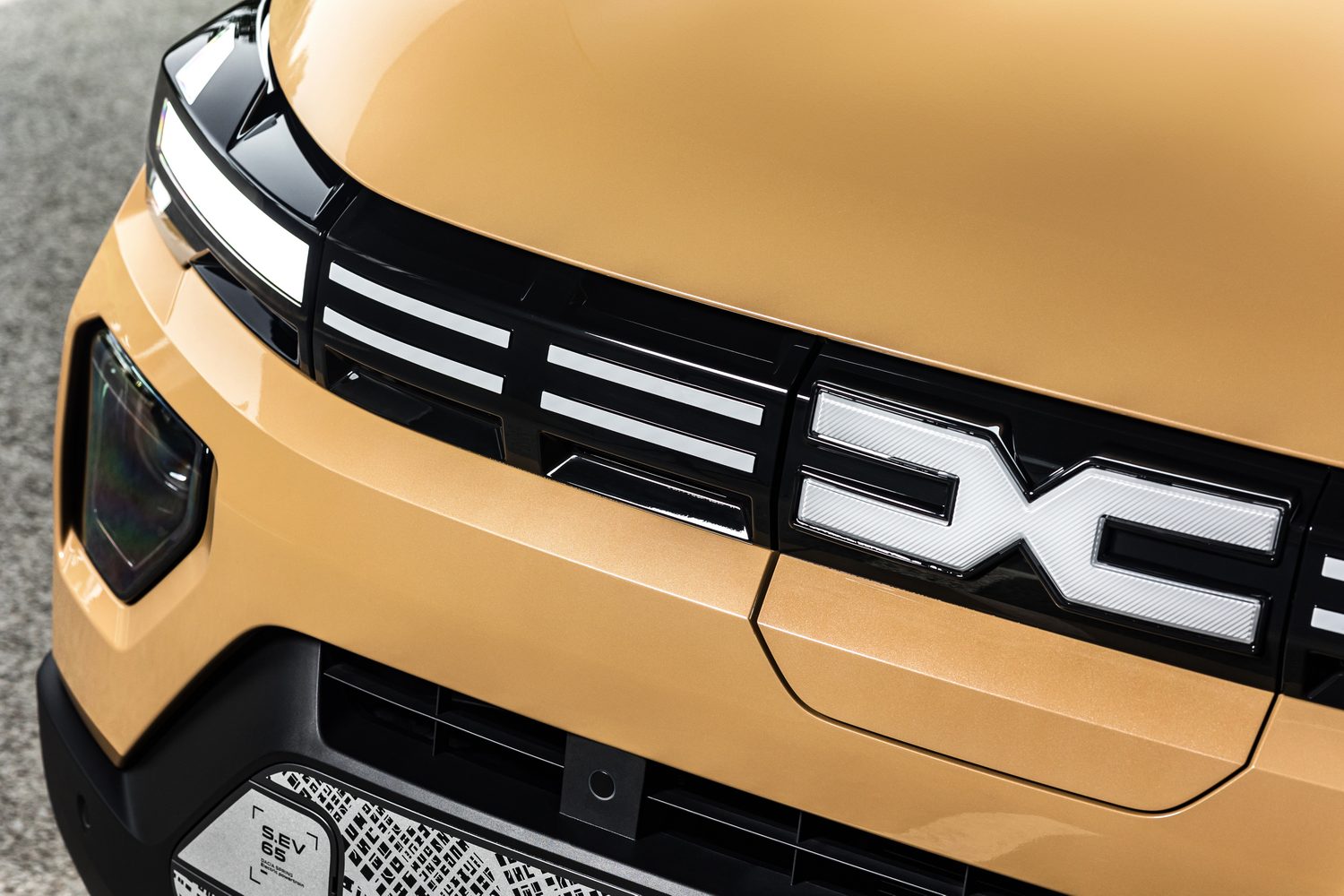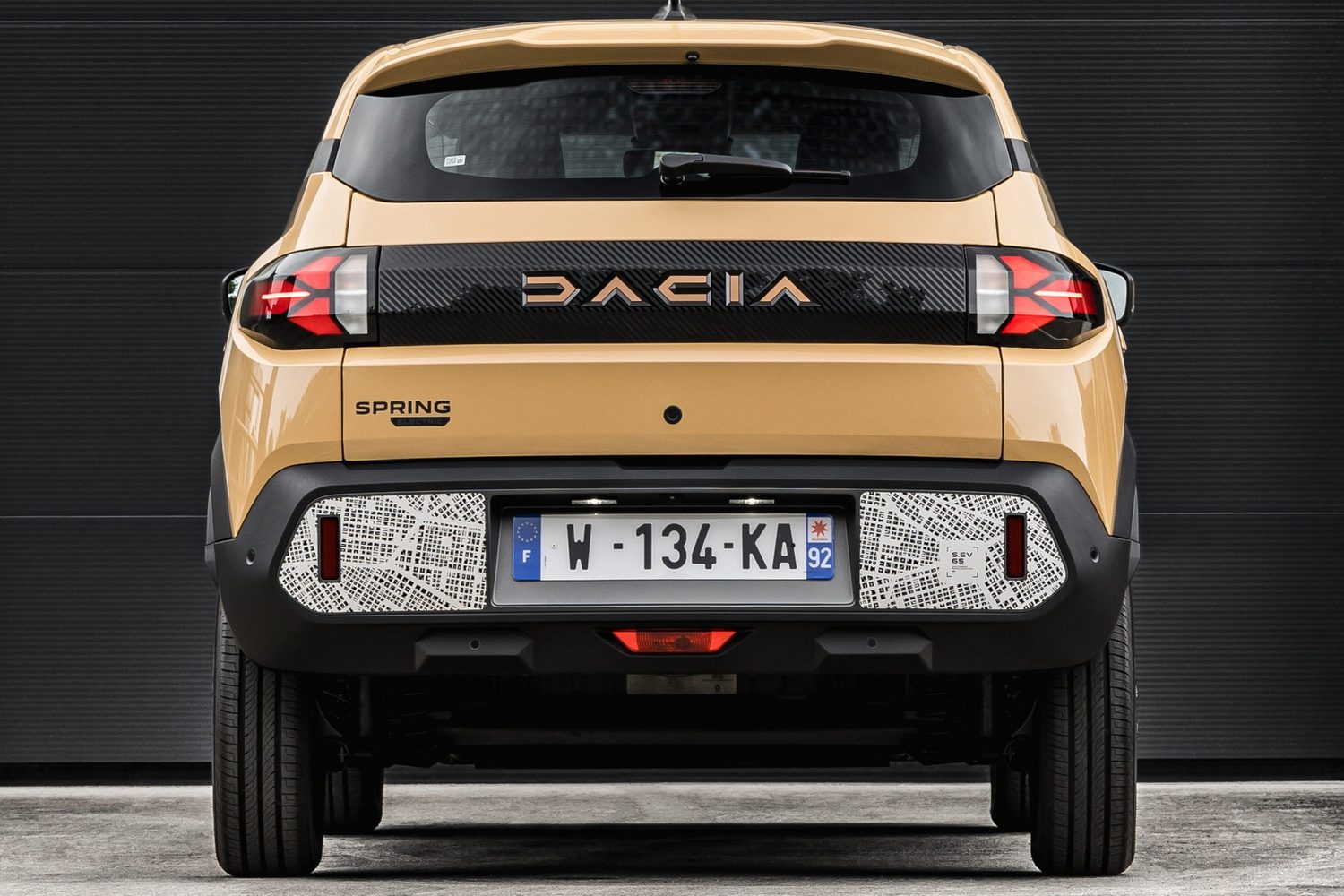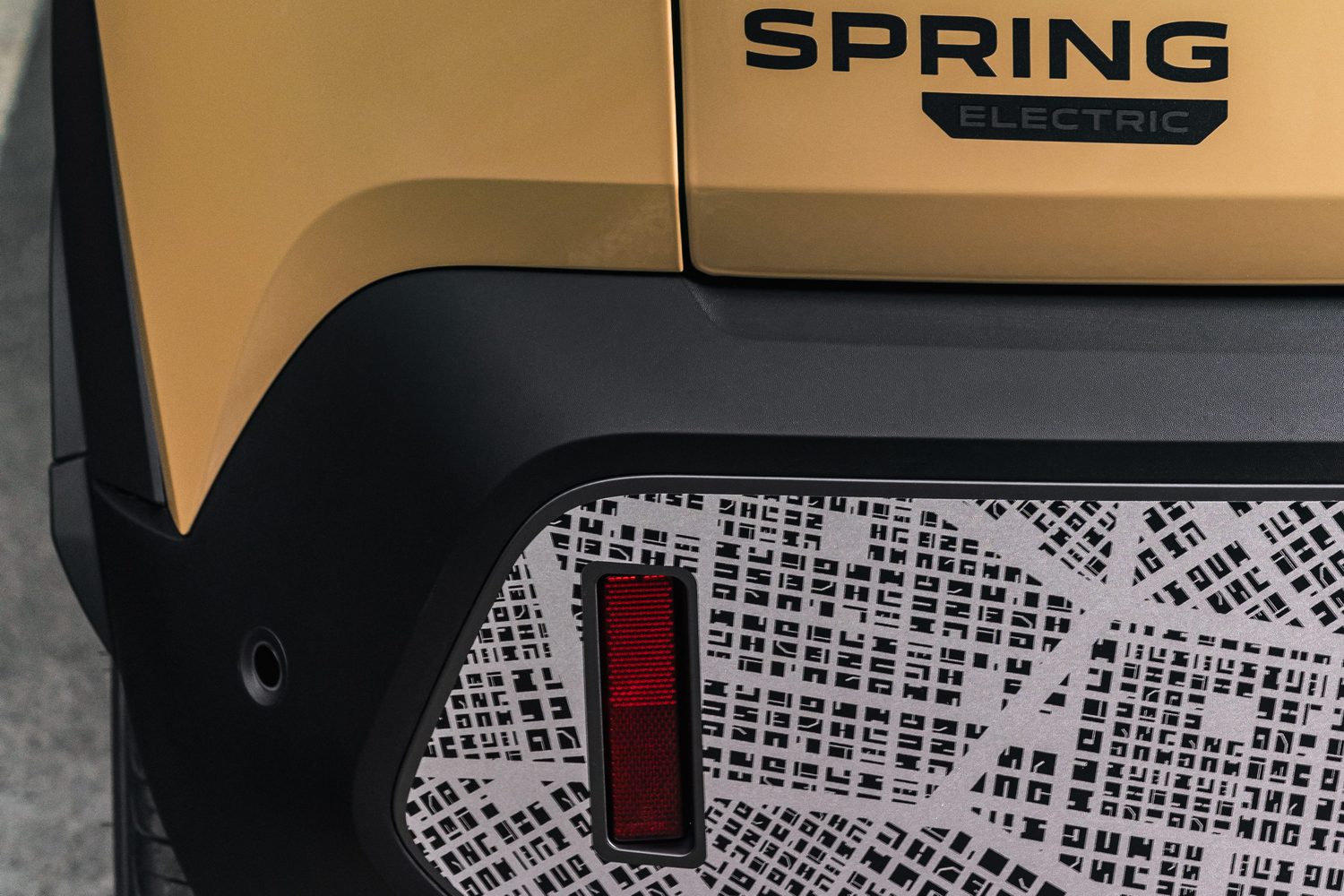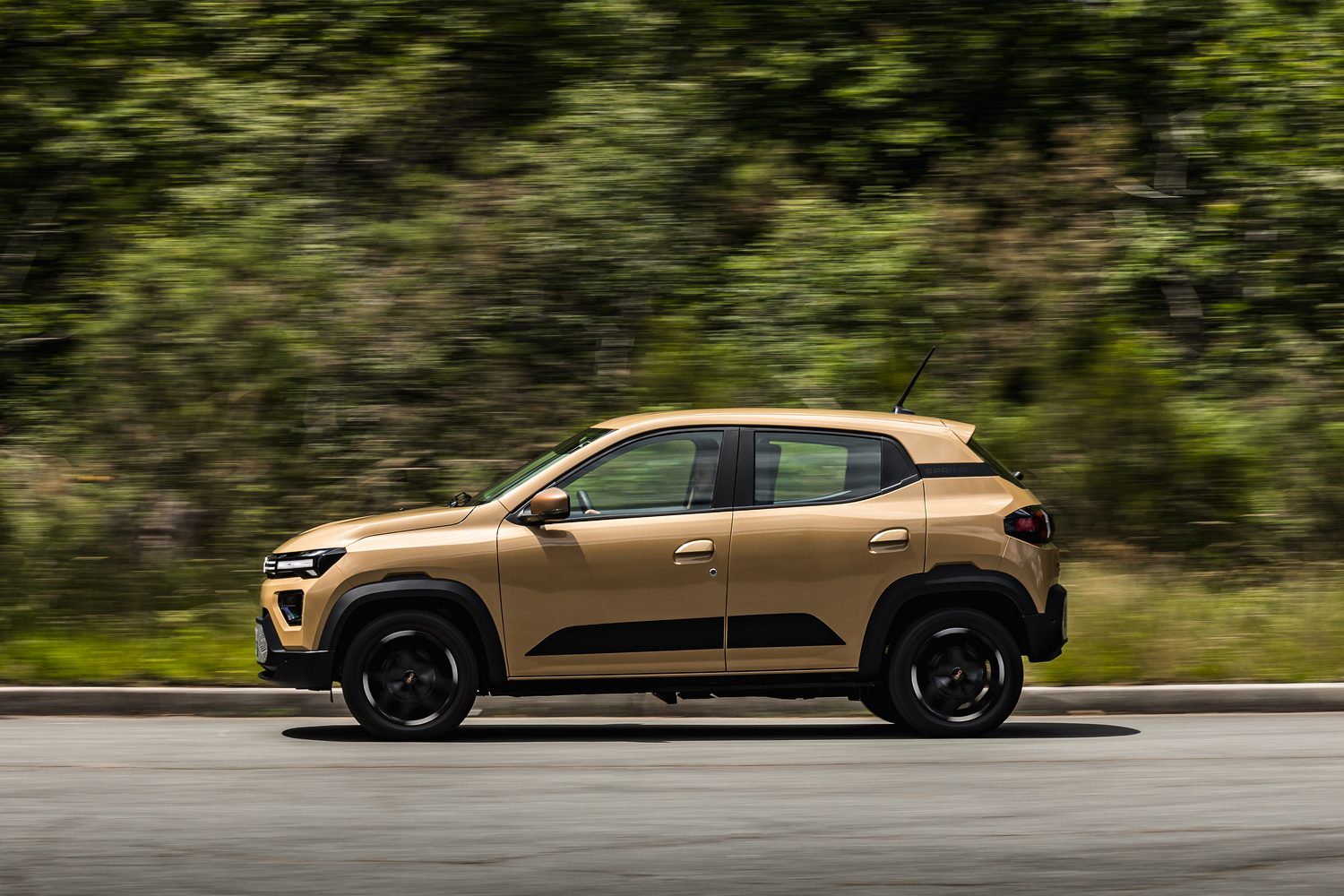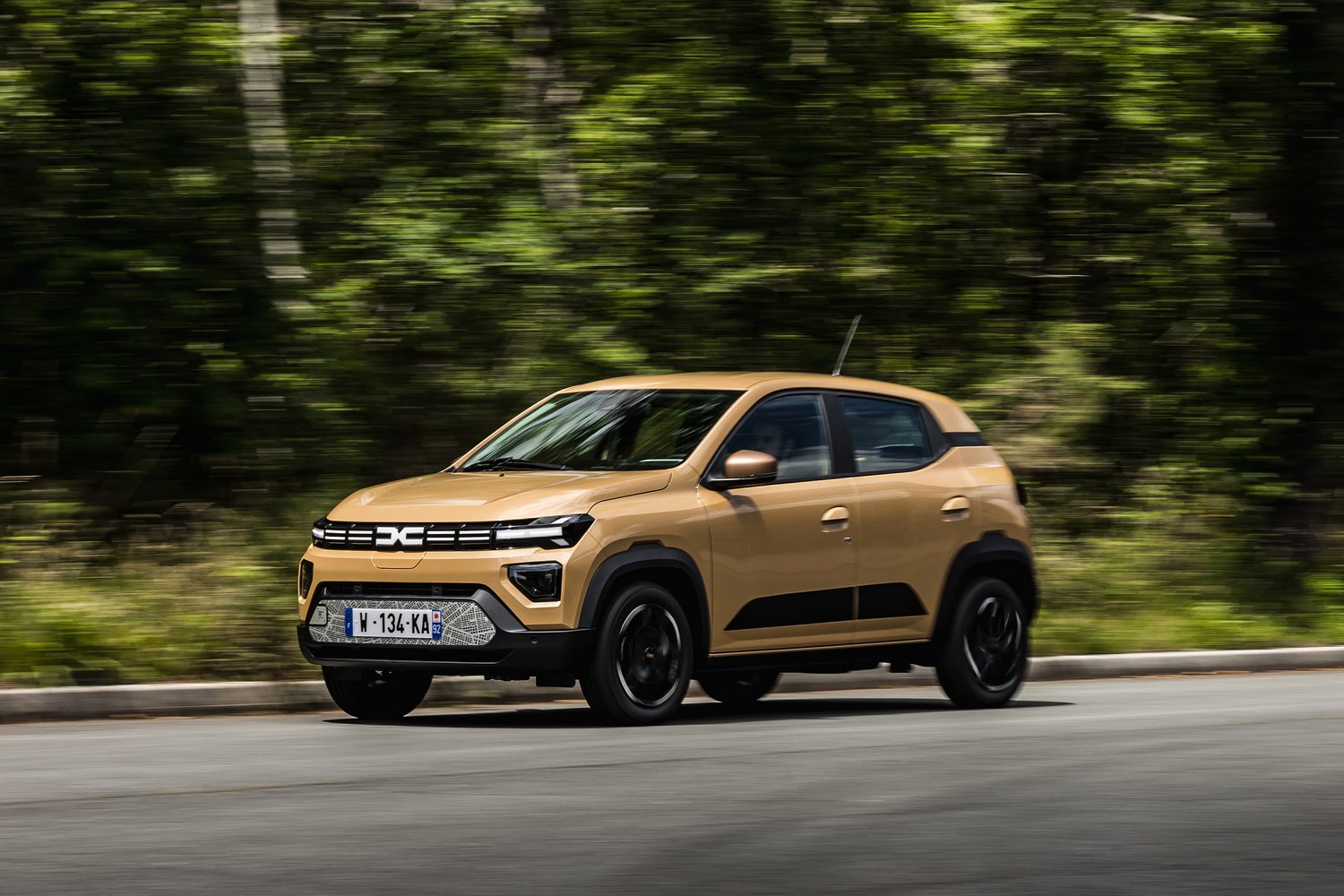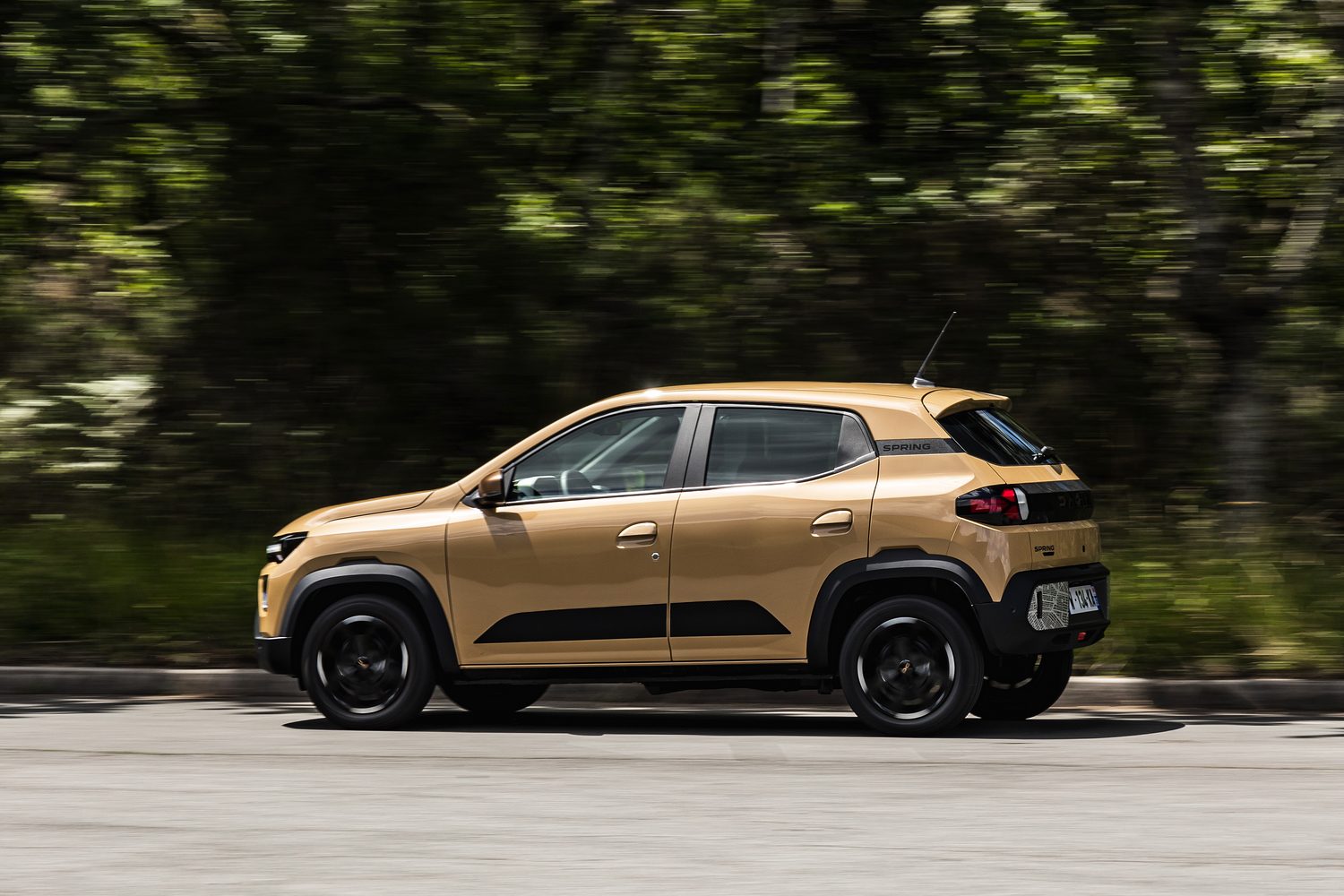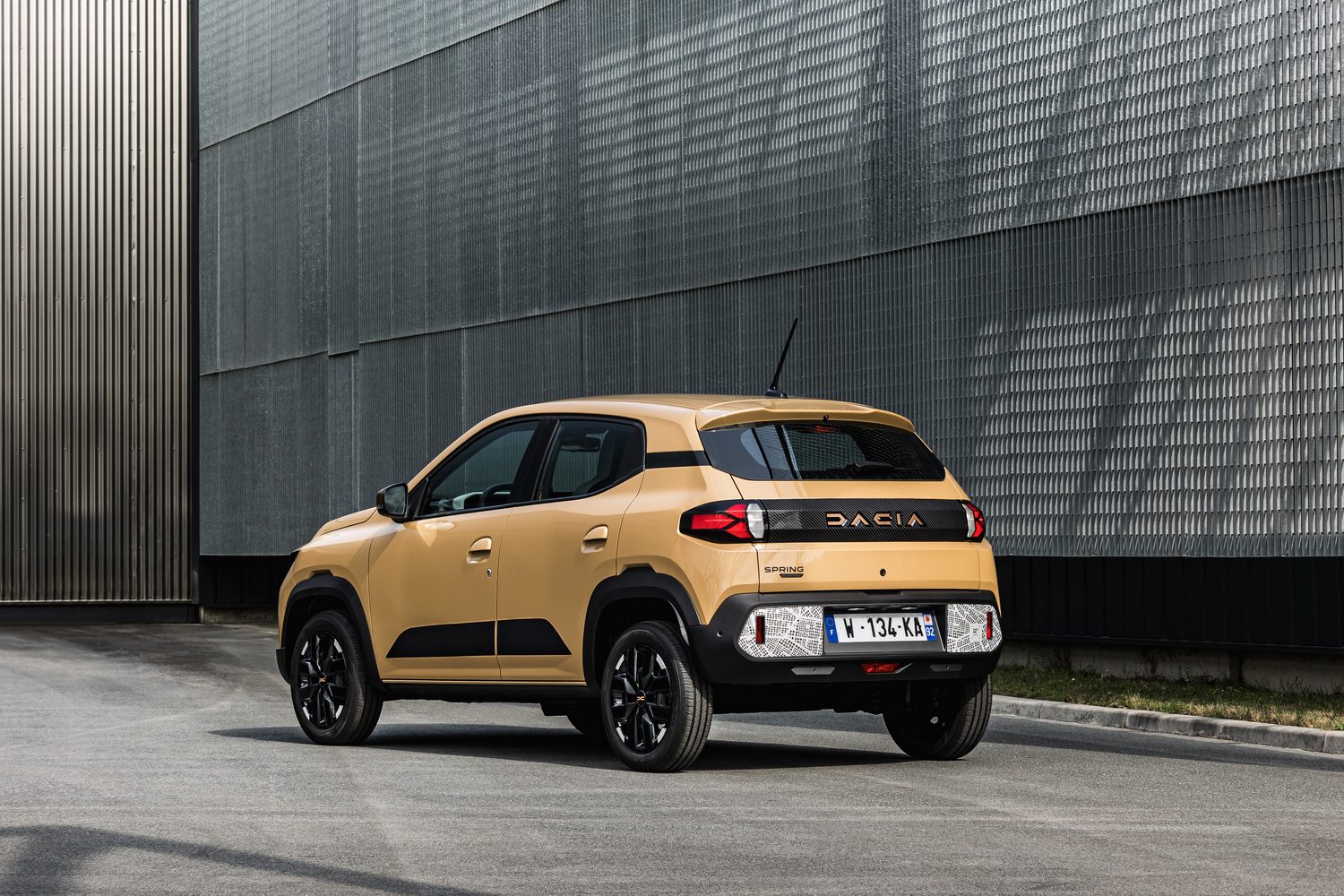The Dacia Spring is new to us in Ireland, finally available in right-hand drive for the first time and going on sale later this year. It’s also new on the outside, in comparison to the Spring that has been on sale in other countries for some time, with entirely new styling and bodywork, and a new interior too. There’s even a new electric motor, giving Spring buyers the option of more power than a mere 45hp (although that less powerful version remains available).
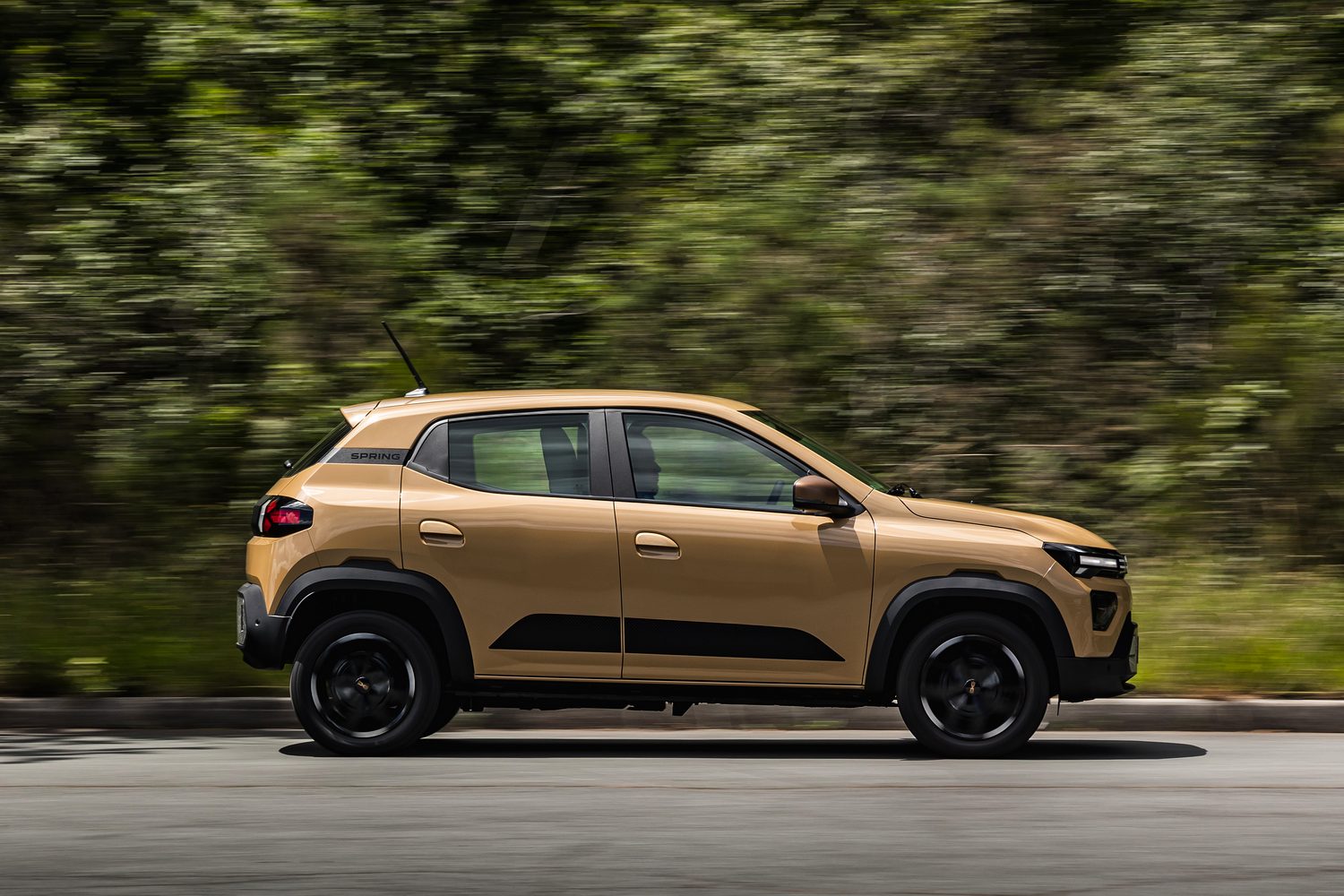
It’s not all that new, however. The Spring has been on sale in other parts of Europe since 2021, and we’ve tested it before in left-hand drive. It’s been a big seller for Dacia, shifting 150,000 units across Europe so far, but now the budget-conscious Franco-Romanian brand has bigger ambitions for the model. Car buyers all across Europe are saying that they’d happily switch to electric motoring if only there were more affordable electric cars. Well, Dacia is going to give them just that.
This Spring is essentially a major update of the old model, keeping the same basic chassis, but adding an entirely new body (only the roof is shared) which gives the Spring a pleasantly chunky look. There are nice details such as a front bumper and wheel arches made with pre-dyed plastic which resists scratches, and an element below the grille which can be dressed up with a variety of decals, including an intriguing-looking urban street map motif. There’s also a classic piece of Dacia budgeting leading to a pleasing design feature - the Spring gets a single windscreen wiper, which uses a massive pantograph arm so that it can sweep most of the screen in one motion (although it does leave a large portion of the passenger’s side un-touched).
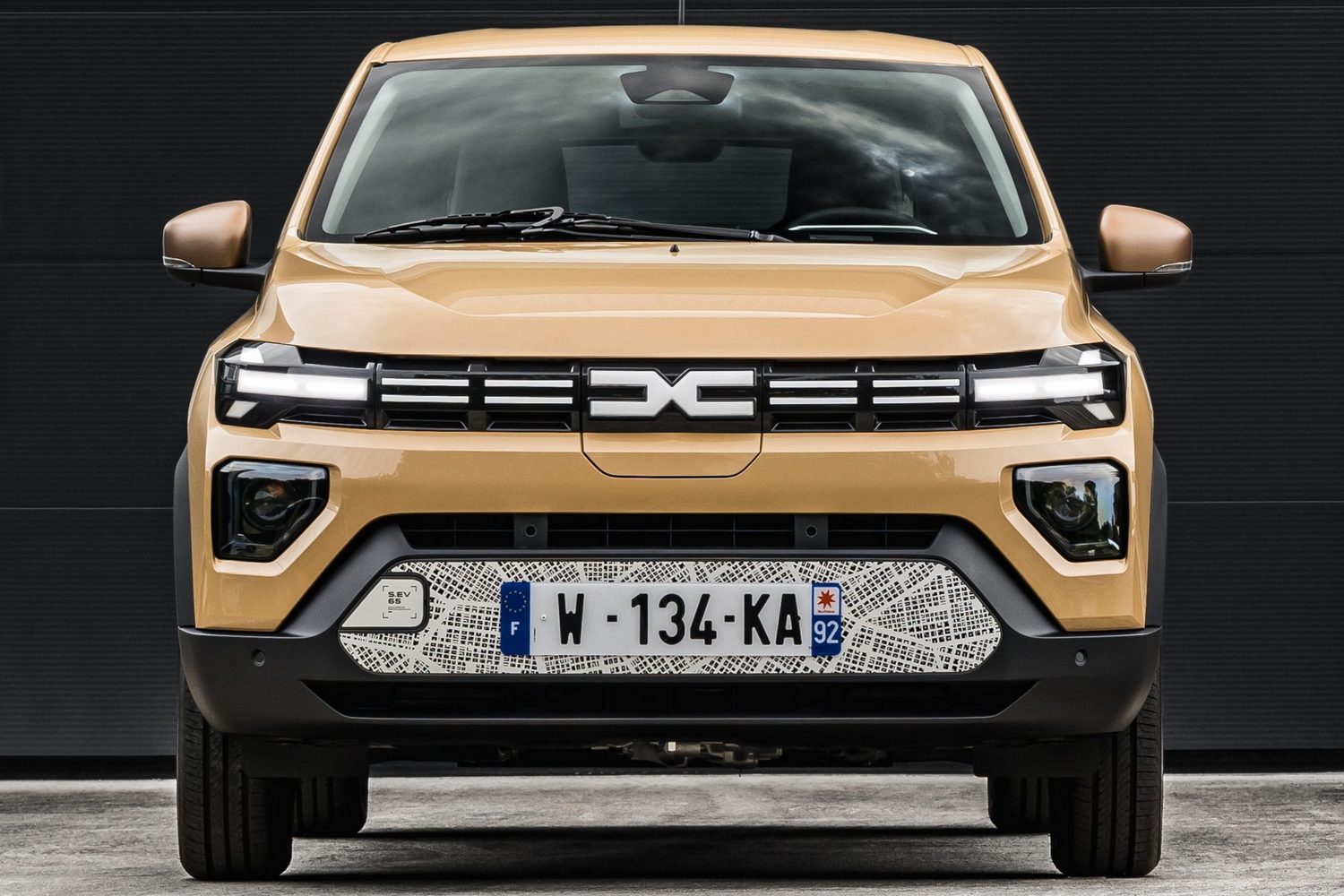
A few months before the Dacia Spring hits Irish shores, we drove it at its launch in France.
How much is the Dacia Spring in Ireland?
Dacia Ireland’s pricing for the Spring makes it, at the time of writing, the cheapest electric car on the market, by a healthy margin of over €1,000 to the next-cheapest, the Hyundai Inster. The Spring starts from just €16,990 for the 45hp model in Expression form. An Expression with the 65hp electric motor will cost €18,790, while the top-spec Extreme will cost €19,990. Those prices are inclusive of the €3,500 SEAI grant.
All versions feature parking sensors, cruise control, air conditioning, electric windows and a host of ADAS features including driver attention alert, traffic-sign recognition and speed alert, many of which can be switched off with a simple double-click thanks to the MySafety switch.
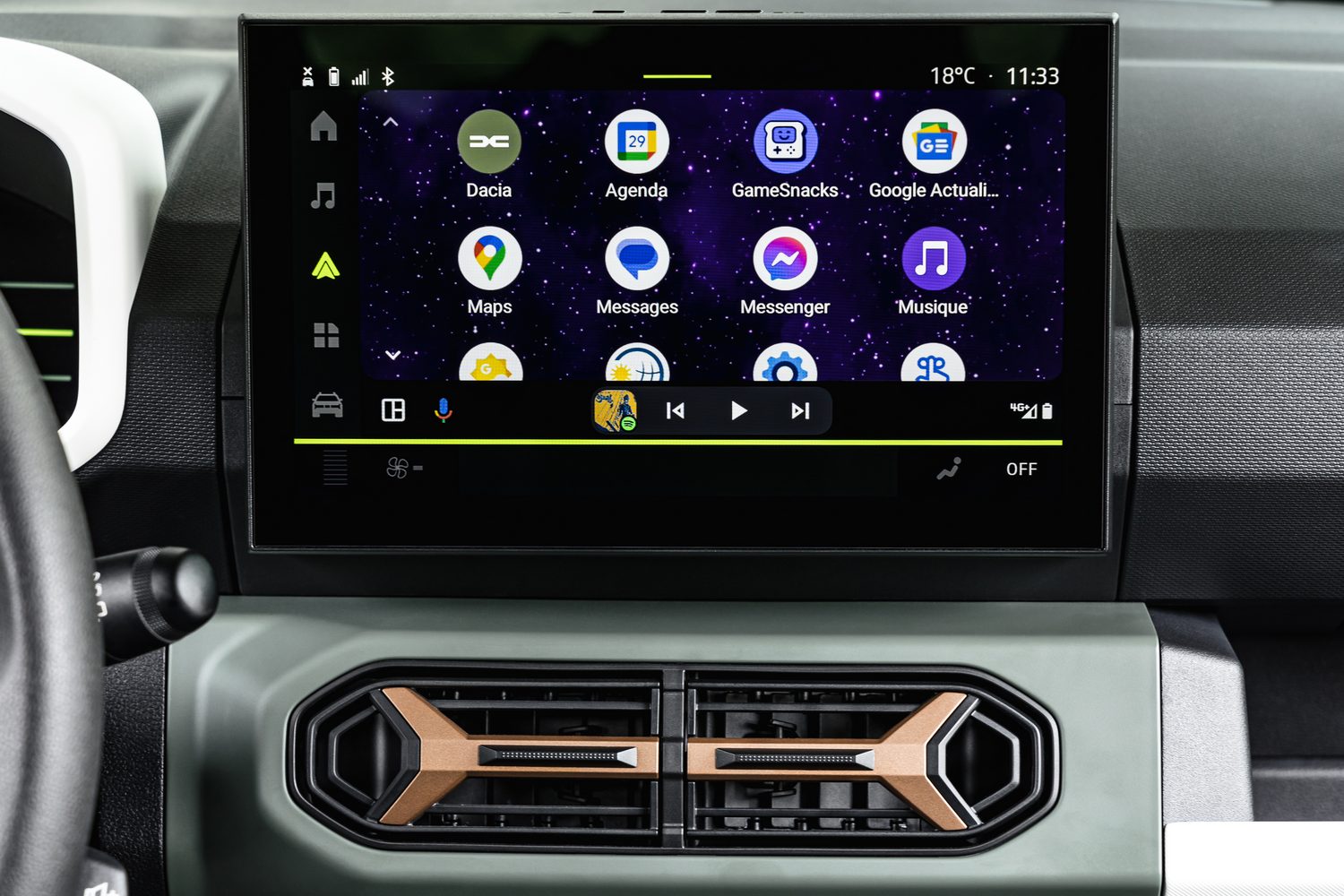
Extreme models, such as the one we’re testing here, will get copper-coloured exterior and interior accents, 15-inch wheels (14-inch wheels are standard for the base model), a 10-inch touchscreen infotainment system with a reversing camera and electrically adjustable door mirrors.
A look inside the Dacia Spring
If you’re expecting the Dacia Spring to be (a) basic and (b) cheap inside, well prepare yourself for a bit of a surprise. OK, not that big a surprise as it is both basic and cheap, but it’s not depressingly so. The dashboard is a simple design, with a standard-fit seven-inch digital instrument display behind the steering wheel, and a large open shelf on the passenger’s side in lieu of a glovebox. Below the centre section is a large panel with physical switches (hurrah!) for the air conditioning and the electric front windows, and a pair of USB-C sockets. Further down and back there’s a large open storage space, and a traditional manual handbrake, plus a large toggle switch for drive selection.
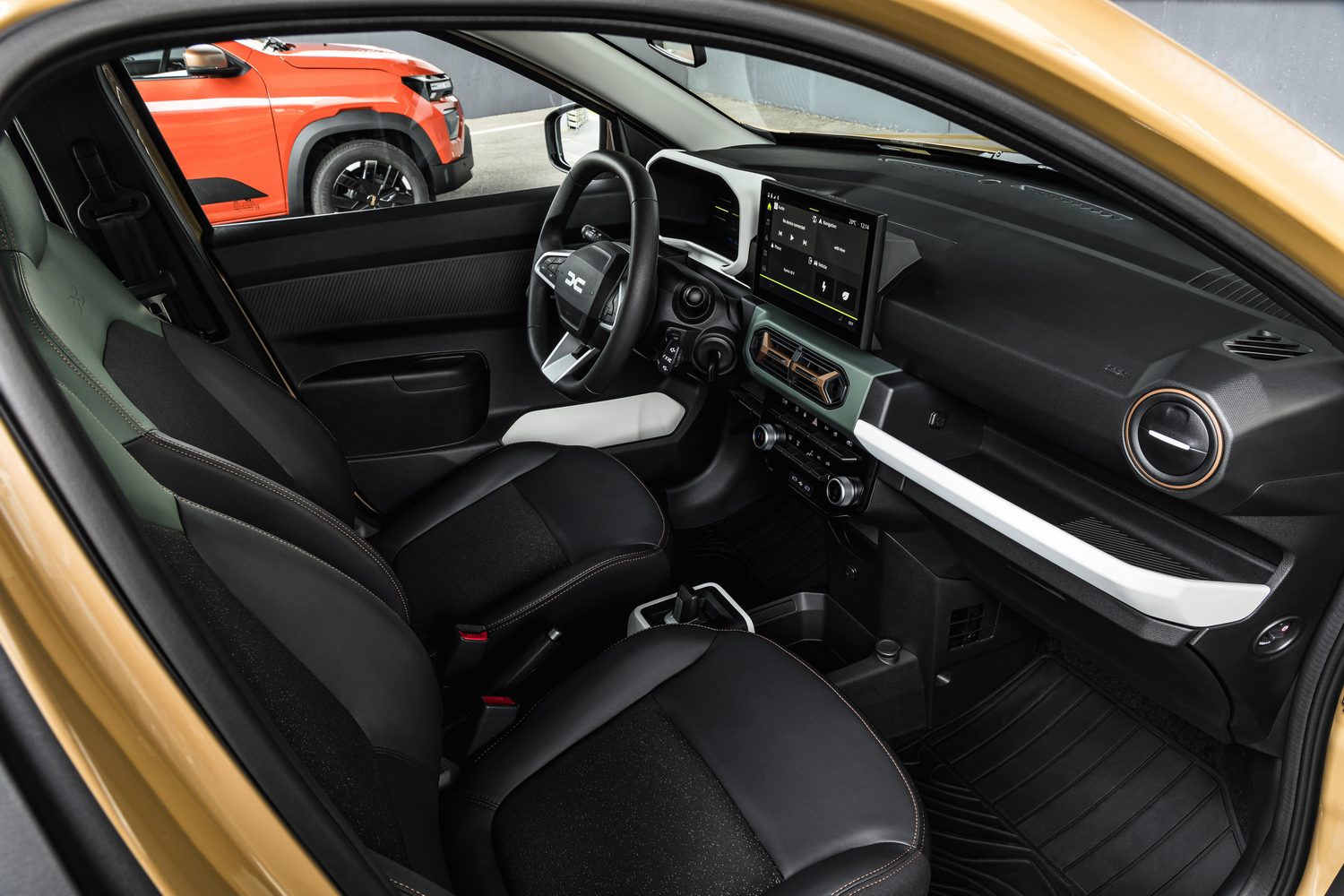
Space is adequate, but if you’re on the large side you’ll find that the B-pillar tucks up tight to your outside elbow, while the door card is very close to your leg. Smaller and shorter drivers than I probably won’t notice, but although the steering wheel now adjusts (the one in the previous Spring didn’t) it’s only for height and not for reach. That said, the Spring is not uncomfortable, even if bigger people will feel a bit scrunched up.
Space in the back is not brilliant, but by the standards of A-segment city-car style models, it’s OK. Legroom is in short supply unless those in the front seats are prepared to sacrifice some of their own space and there are only two rear seats. There’s no centre rear seatbelt, which is probably just as well, as if you had two adults on board in the back there’s probably not enough room in the middle for anyone. The boot is surprisingly practical, though, with 305 litres of space, and that expands to a useful 1,004 litres if you fold the back seat (which does not fold flat, and nor does it split). There’s an optional storage tray which clips in under the bonnet, giving you a handy 35-litre ‘frunk’, too.
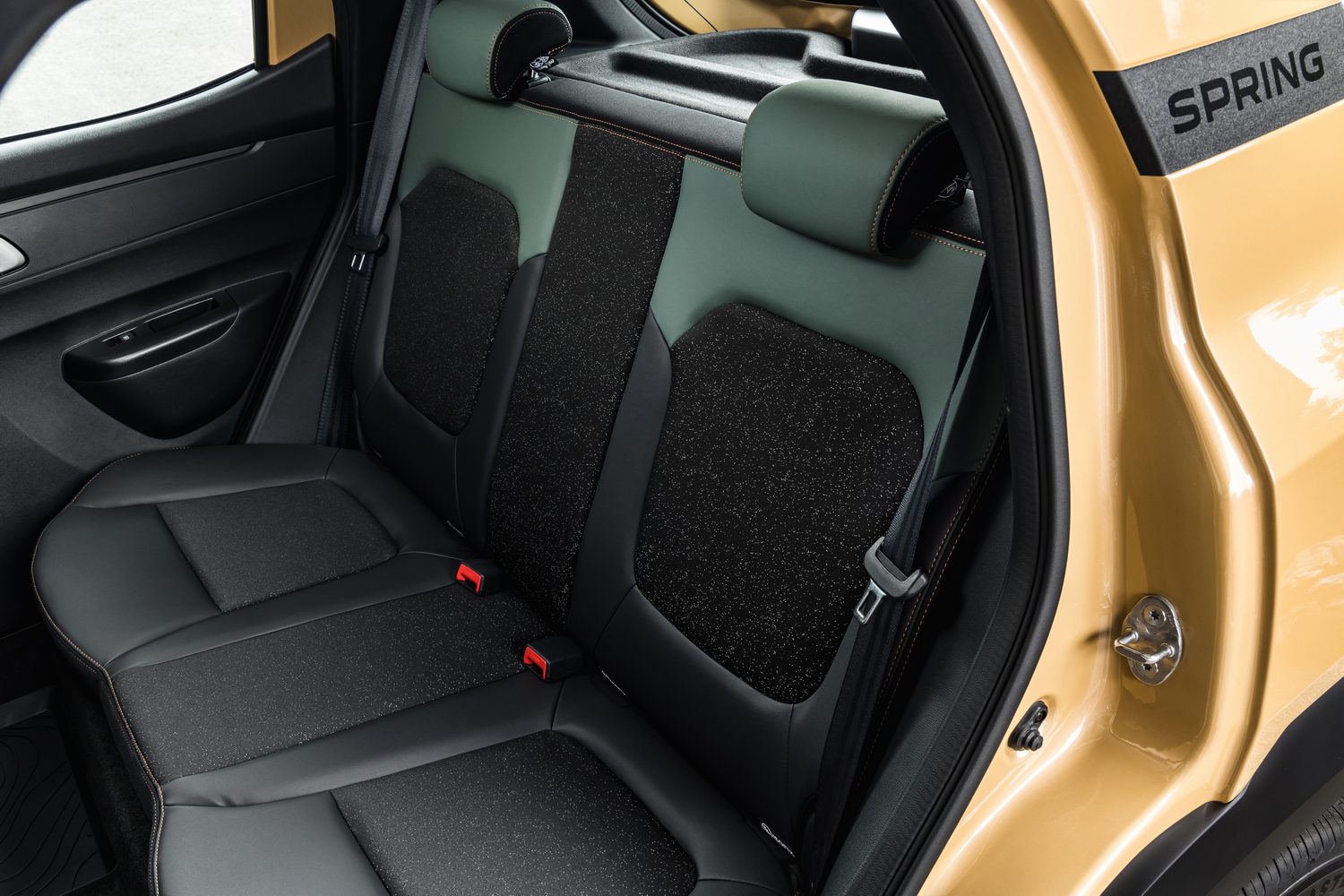
There’s also the inclusion of Dacia’s ‘You-Clip’ system which allows you to pick and choose from extra interior accessories, ranging from cup holders and a lidded glovebox to a mobile phone holder which includes a wireless charging pad. It’s a clever idea - all the accessories can simply be clipped into place as needed - and Dacia has previously released the measurements for the You-Clip anchors, allowing owners to 3D-print their own designs.
The Dacia Spring’s on-board technology
The Spring is not a car that leans on in-cabin technology for its showroom appeal. All models get a simple and straightforward digital instrument panel, which Dacia says is customisable, but what that really means is that you can flick through a few trip-computer options. That said, the screen has a clear and simple layout, and is easy to use so that’s a bonus.
There’s an old-fashioned fingertip stereo controller on a stalk behind the right-hand side of the slightly squared-off steering wheel, a classic Renault parts-bin component. The main ten-inch touchscreen, only available for higher-spec models, has straightforward menus and a decent built-in navigation function, but most owners will probably just plug their phones in and use the apps on those.
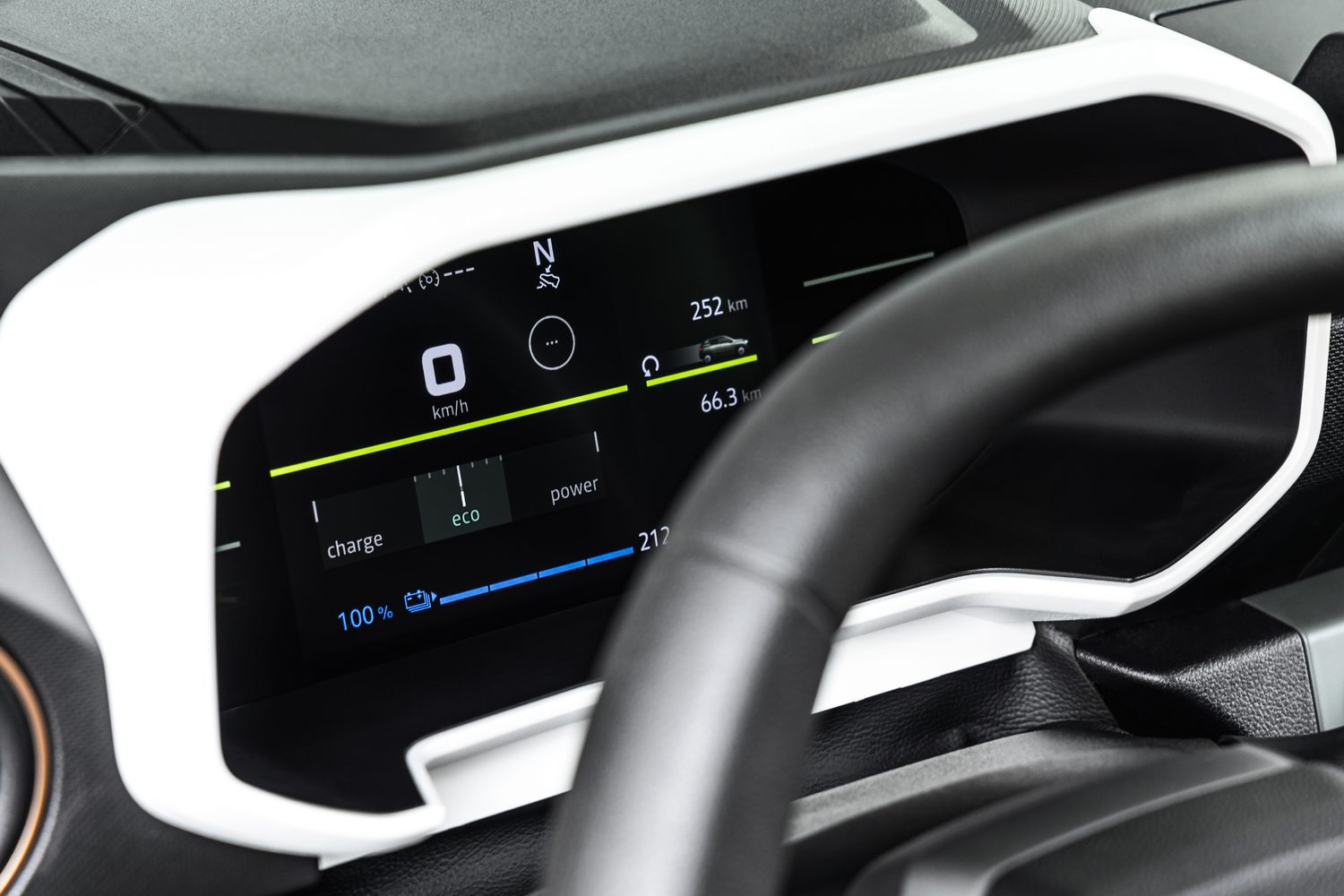
The Spring has cabin pre-conditioning and scheduled charging, which can be controlled either through the touchscreen or via a smartphone app. When it comes to charging, the Spring is - not for the first time - refreshingly simple. Most owners, Dacia reckons, won’t even need a charging wall box, as the Spring will charge from a domestic socket in about 11 hours. Fast DC charging is optionally available, at up to 30kW.
There’s also V2L charging - or Vehicle to Load - which allows you to use the Spring as a mobile power station for all sorts of other devices. Dacia can provide an adaptor with a domestic socket that slots into the Spring allowing you to run an electric grille, for example, should you fancy a quick croque monsieur when you’re out and about, and you can plug in a Nespresso machine should you want to wash that sandwich down with a quick cup of coffee. The picnicking possibilities are boundless.
Driving the Dacia Spring
With maximums of 65hp and 113Nm of torque, you’re not going to be expecting the Dacia Spring to be the sportiest car in the world. The 0-100km/h time of 13.7 seconds seems to confirm this (although even that is in another league compared to the 45hp version’s 19-second time...). But actually, that’s not the whole story, so let’s fire the Spring up - using a for-real old-school key, which you actually twist in an ignition barrel to wake the battery and motor up - and head out on the roads of rural France.
Riding on tiny 15-inch wheels, the Spring’s primary ride is quite soft and - appropriately - springy, although it can be caught out by big speed ramps which, if tackled with a little too much enthusiasm, will have the Spring on its bump-stops. For the most part, though, it has a pleasantly absorbent ride quality, as befits a car which is designed to spend most of its time around town.
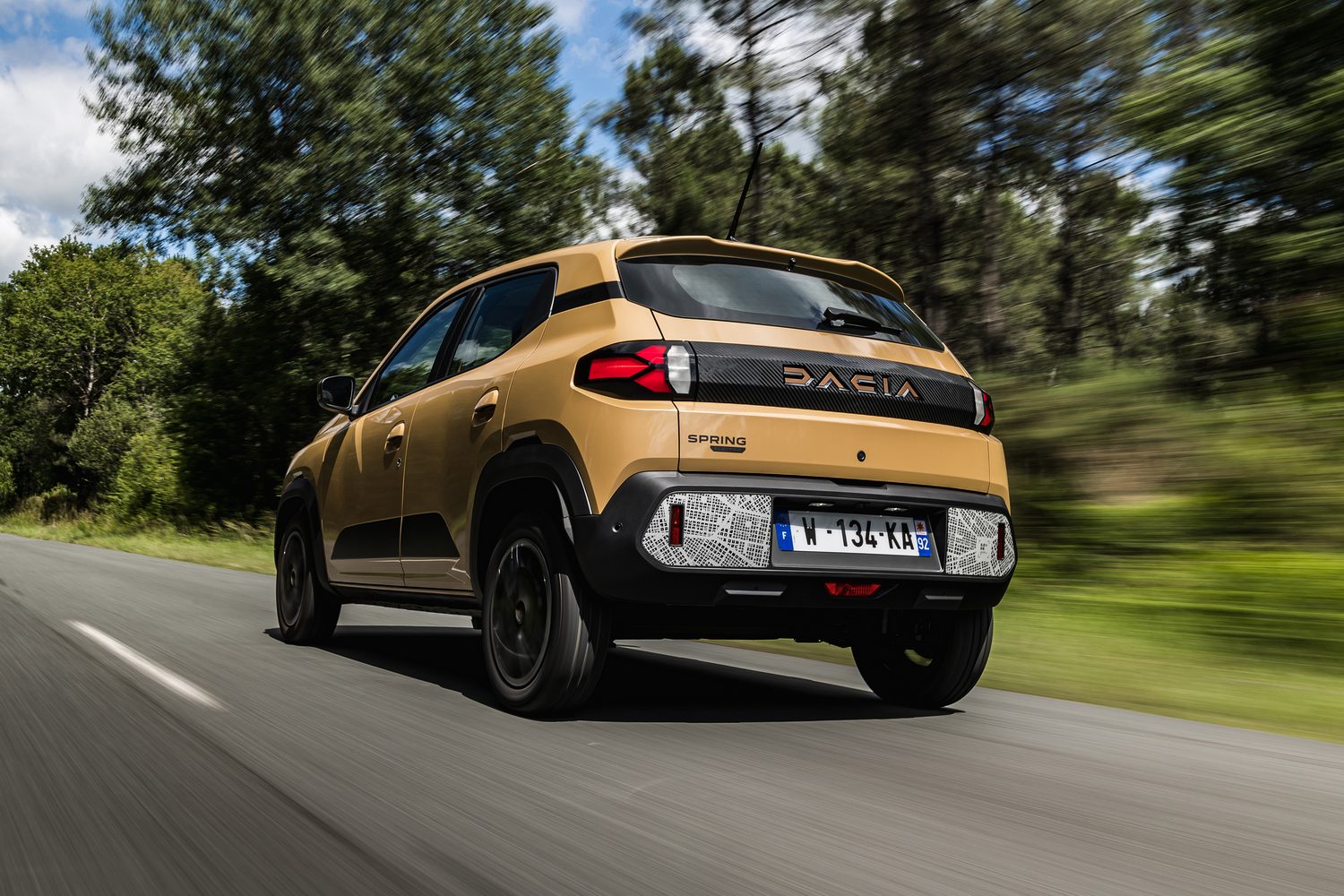
At urban speeds, the Spring feels totally at home. It has a tight nine-metre turning circle which means that it can get into and out of most tight spaces in town, and while rear visibility is surprisingly limited (a rising belt-line and relatively small rear window are to blame) the reversing camera of this Extreme model helps. The steering is light and low-geared, and that’s perfect for slotting in and out of parking spaces, and generally keeping things low-effort around town.
What about the open road, though? Well, our test drive took place in and around Bordeaux, and that was to the Spring’s advantage as most of the country roads on which we were driving had an 80km/h limit. At that kind of speed, the Spring just lopes happily along, using hardly any power. The balmy summer weather doubtless helped, and it might have been a very different experience on a cold, rain-lashed winter’s day.
However, there is fun to be mined from the Spring’s chassis. Those tiny wheels and light steering tell you pretty quickly that this is a car with low cornering limits, and so it proves. A tight and twisty stretch of road, tackled at slightly enthusiastic speed, returned plenty of body lean, feel-free steering and a sense that the little tyres were constantly on the edge of howling in protest.
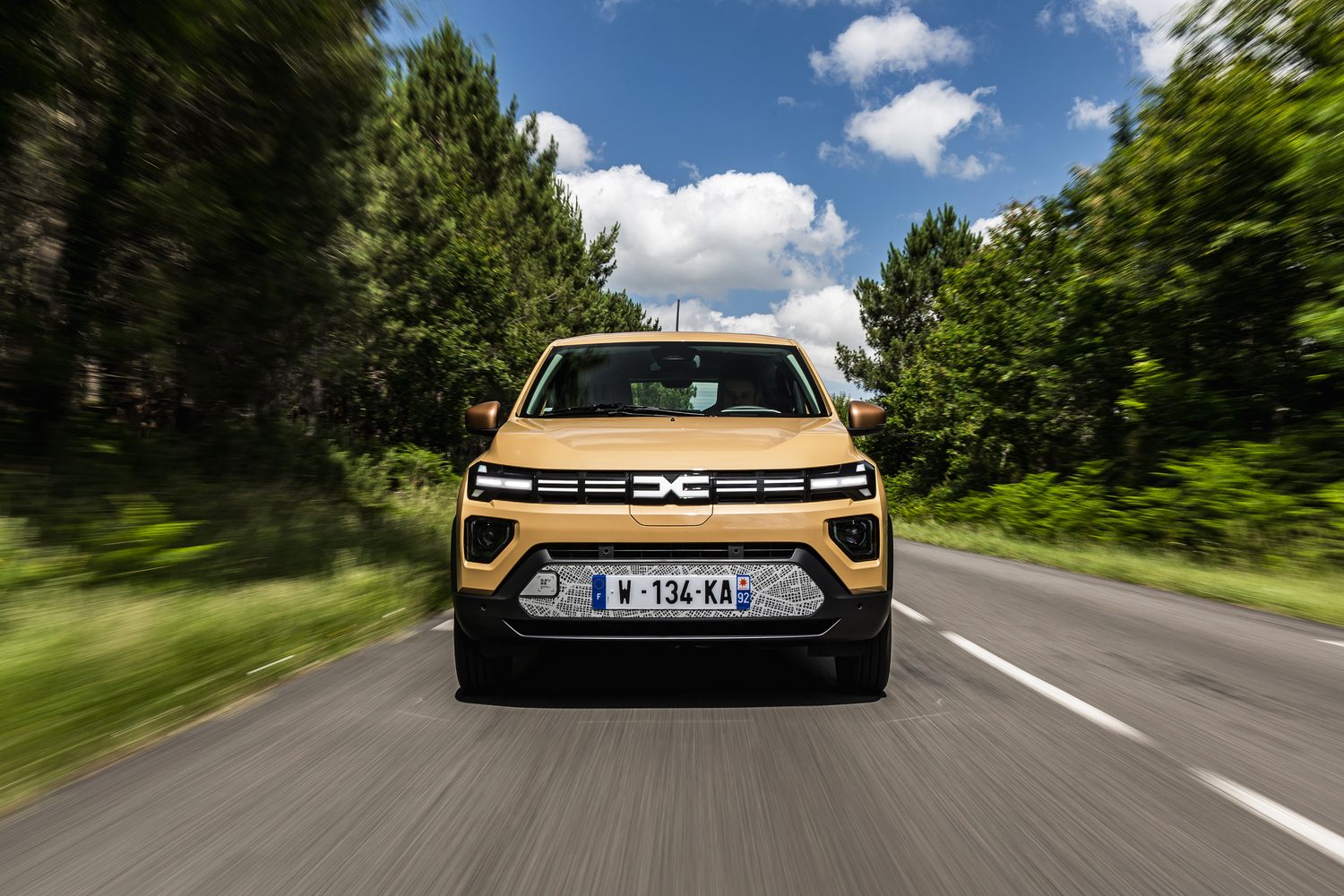
And yet... the Spring is the lightest electric car currently on sale, and even this range-topping version clocks in at just 984kg. So, while it’s not powerful, it doesn’t need to be. And while it doesn’t have big wheels and tyres, or stiff suspension, it doesn’t need those either. And so, while you’re chucking it around, and noting that it’s not all that good at fast corners, there’s also a sense that the Spring is trying its absolute best to do that which you’re asking of it, and so the two of you rock along quite happily. It’s not a fun car, per se, but it can actually be quite engaging and enjoyable to drive.
How much range has the Dacia Spring?
The answer here depends very much on how and where you’re doing your driving. The official 225km range held up well on this test on largely slow roads in balmy conditions. A cold run up a motorway would doubtless have seen us struggling to get even 100km out of the tiny battery, but then that’s just not what this car is for. Dacia’s research from its existing Spring customers shows that they travel around 37km each day, split into four journeys, and that they do nearly all their charging up at home. It’s a local car for local people. We averaged 12.0kWh/100km compared to Dacia’s official figure of 13.5kWh/100km. Irish country roads, with their 100km/h speed limits, will likely prove a sterner test for the Spring’s economy and range.
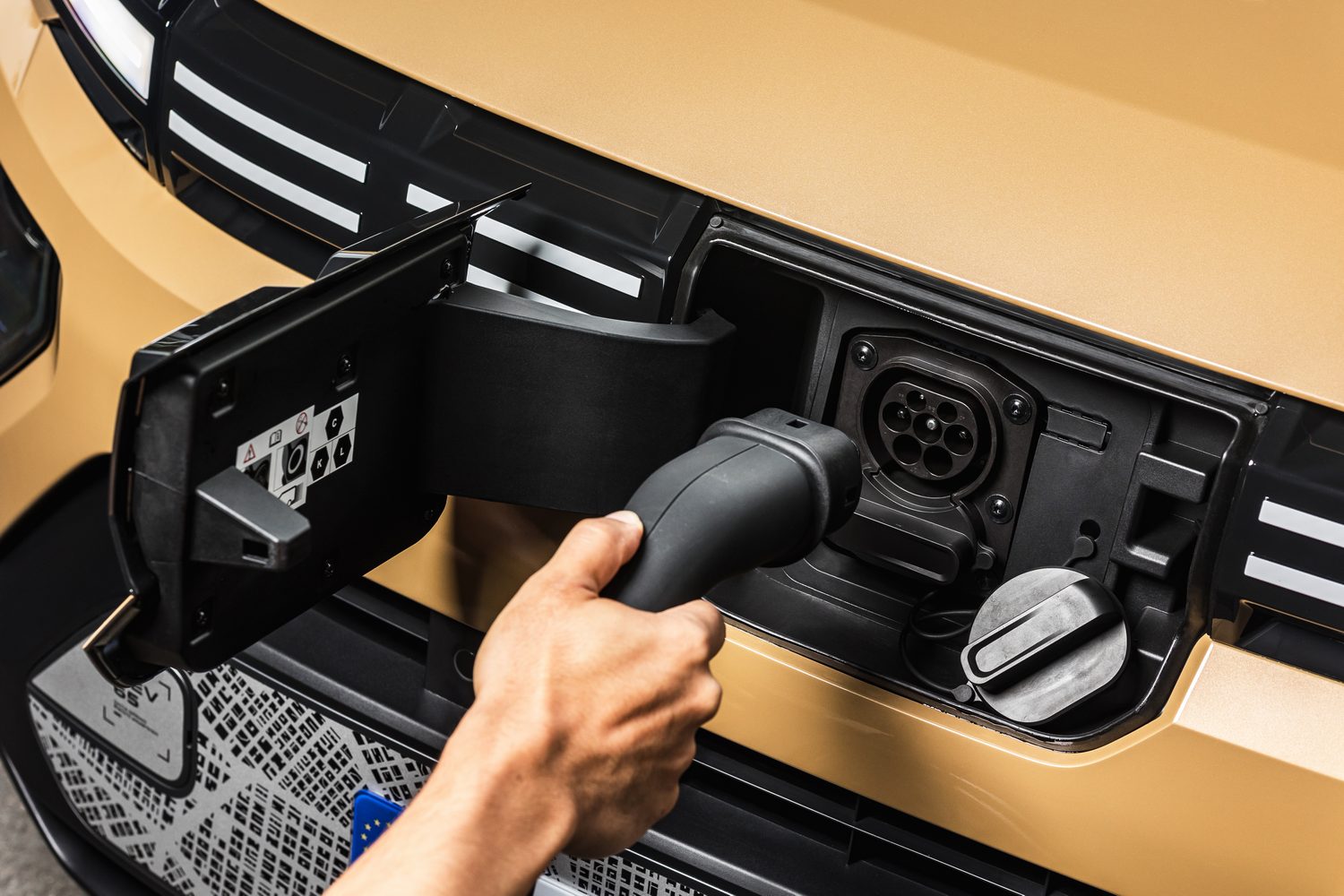
How many child seats can I fit in the Dacia Spring?
There are just two ISOFIX anchor points in the Spring, both in the rear seats, with none in the front passenger seat (although of course you can fit a child seat in front using the seatbelt). The limited space in the back of the Spring means that you’re most likely going to struggle to fit bulky rear-facing seats there, as is the case in all cars of this size.
How safe is the Dacia Spring?
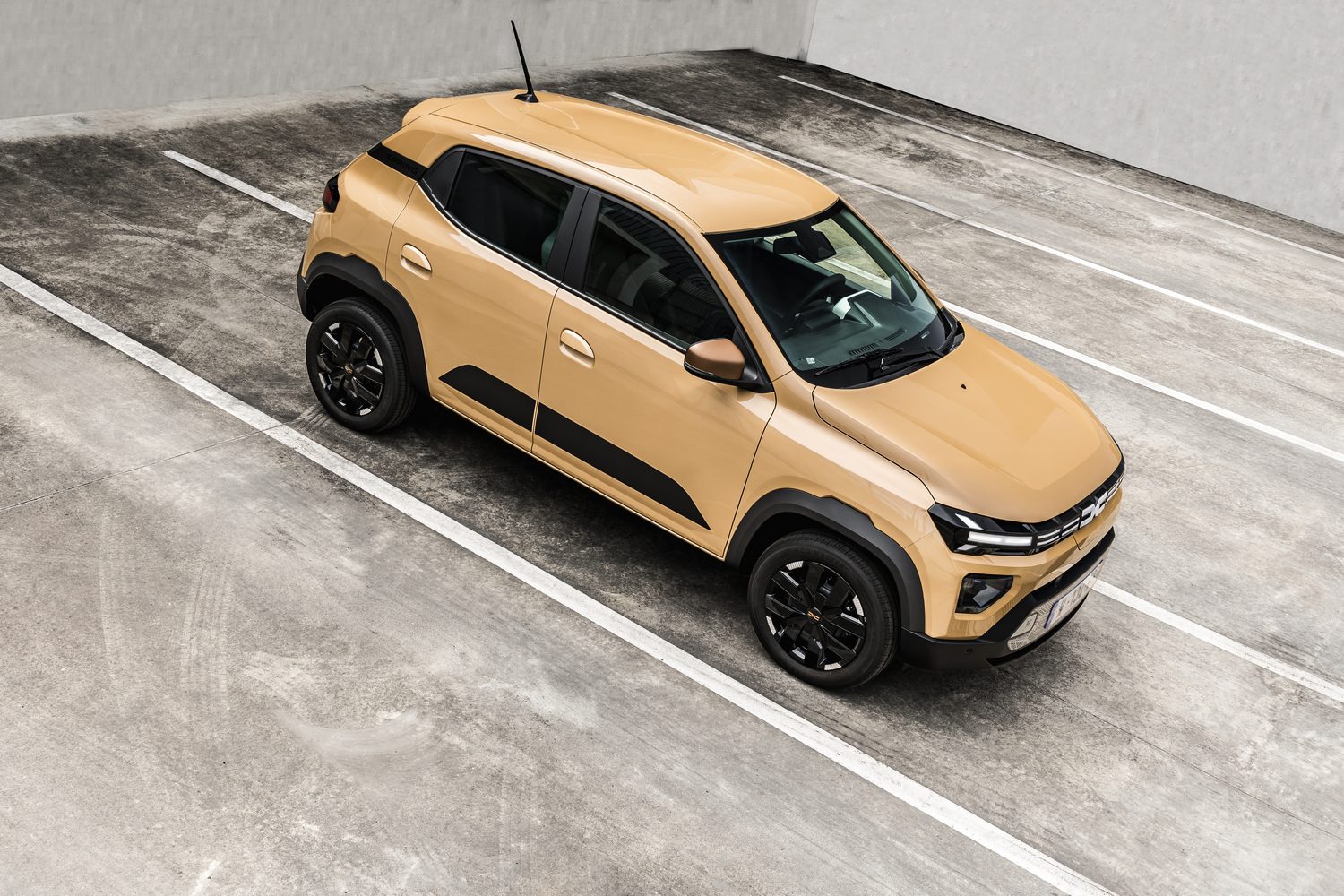
Previously, the Spring had a Euro NCAP rating of only one star, but there’s a chance that this new version - thanks to more standard safety kit - will do better. In terms of physical crash protection, that remains to be seen until it’s been independently tested. Dacia’s relationship with crash testing is often a fractious one, with cars receiving low scores because they don’t include high-end electronic assistance systems as standard, and Dacia hitting back by saying that the cars are fundamentally safe and that the testers are putting too much store in such complex safety kit.
The reasons you'd buy a Dacia Spring
Would you buy the Spring just because it’s cheap? Quite possibly - this could well be the car, or at least one of the cars, that finally breaks the electric-cars-are-expensive hex that’s currently affecting sales of battery-powered vehicles. It makes for a perfect runaround, capable of all the short-to-medium journeys that people do and will be hugely good at doing those. Longer journeys may well be a task too far, but at low speeds and within its own limits, the Spring is a hugely enjoyable car. That’s not just about how it drives, but equally about knowing that it’s essentially as little car as you can get away with. There’s a warm feeling that you get from driving such a minimalist car, and that the Spring does very well indeed.
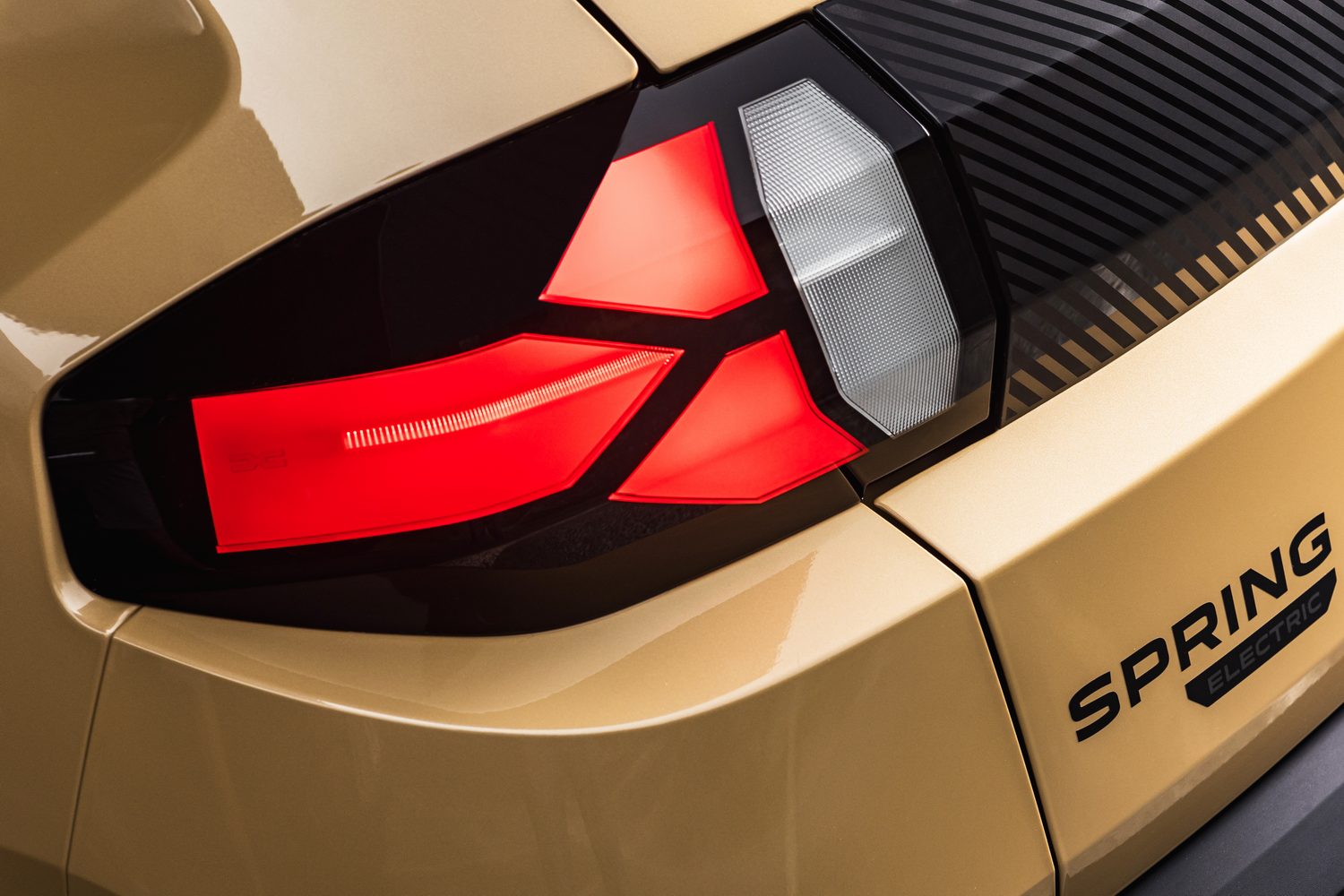
Ask us anything about the Dacia Spring
If there’s anything about the Dacia Spring we’ve not covered, or you’d like advice in choosing between it and other cars, you can avail of our (completely free) expert advice service via the Ask Us Anything page.

